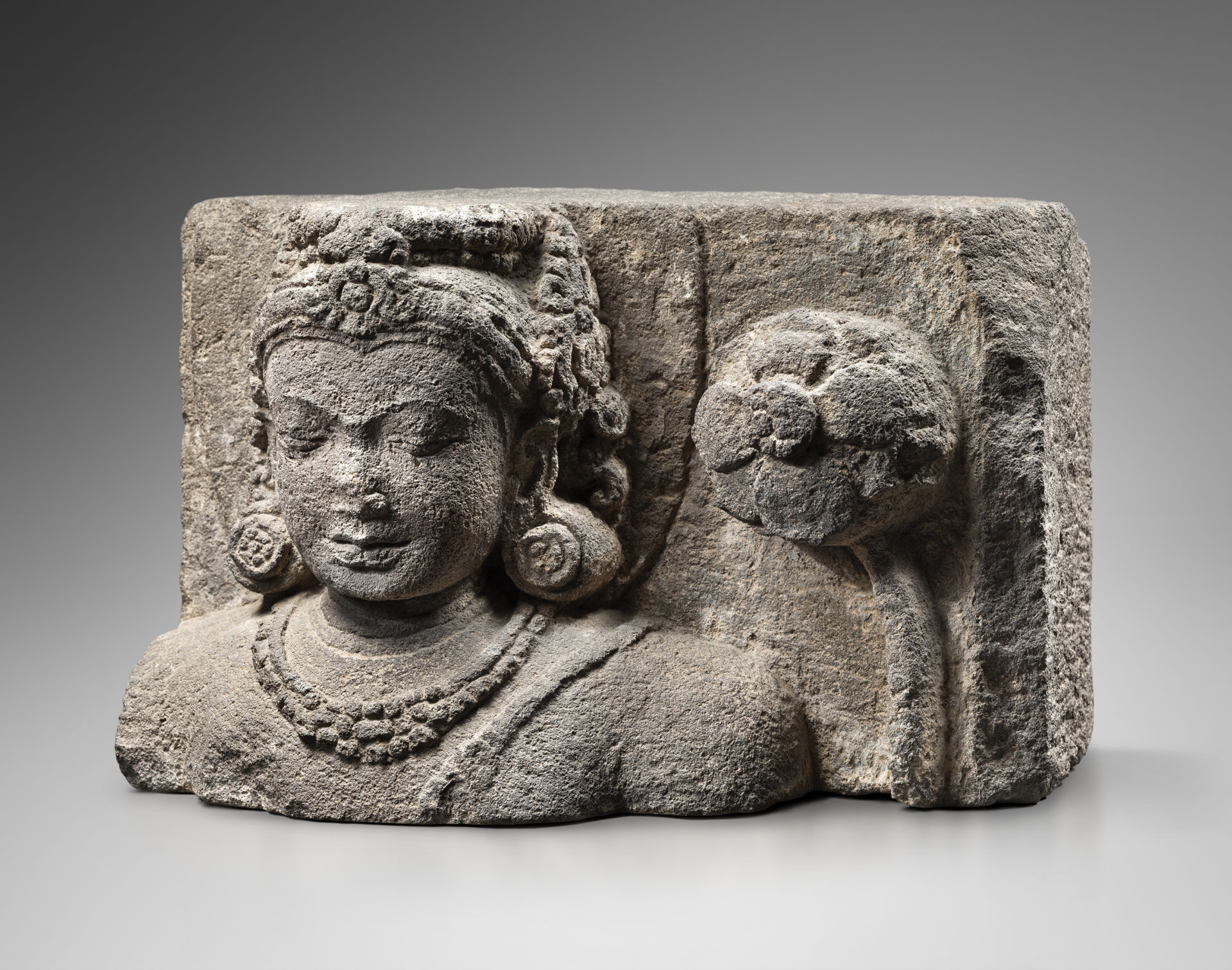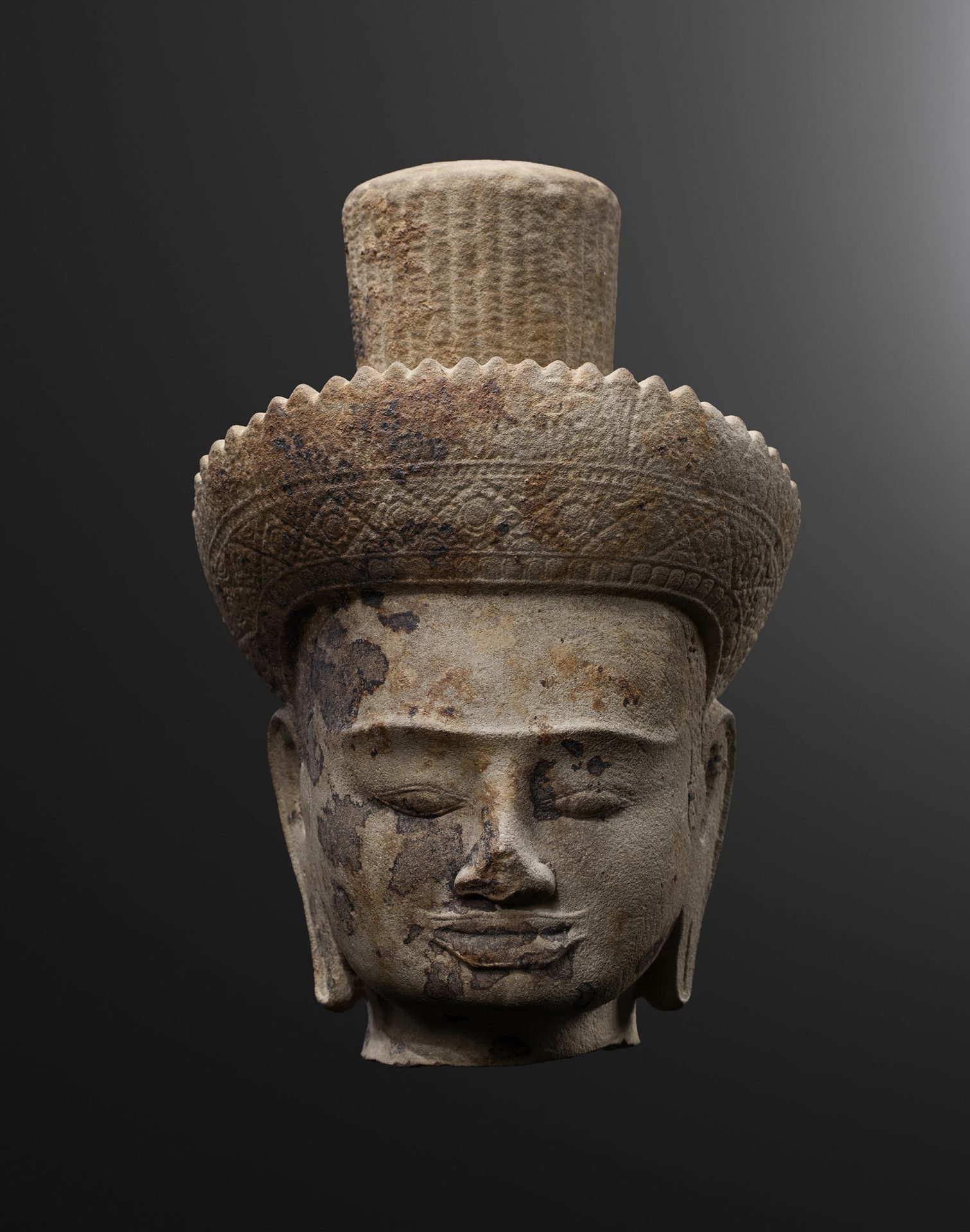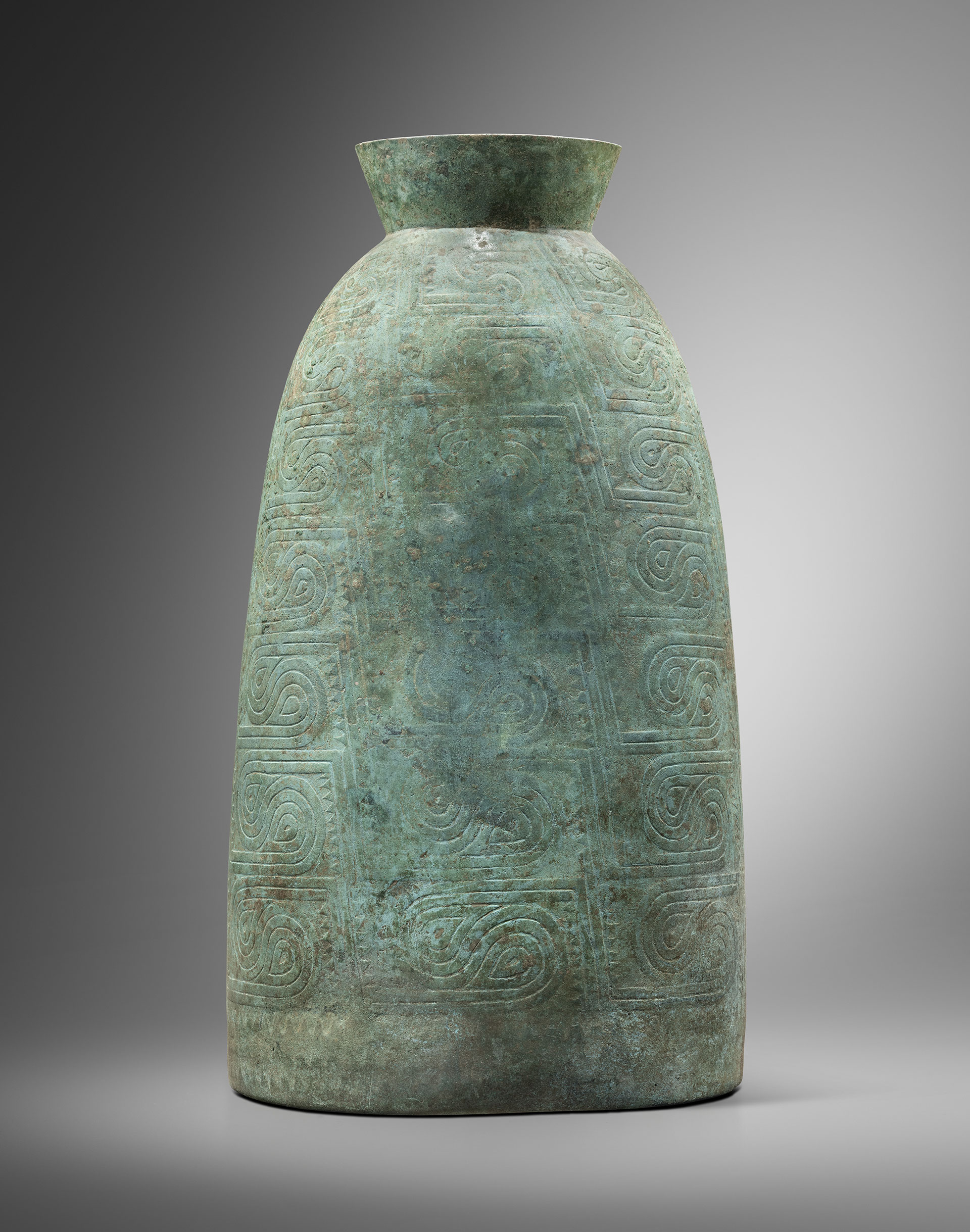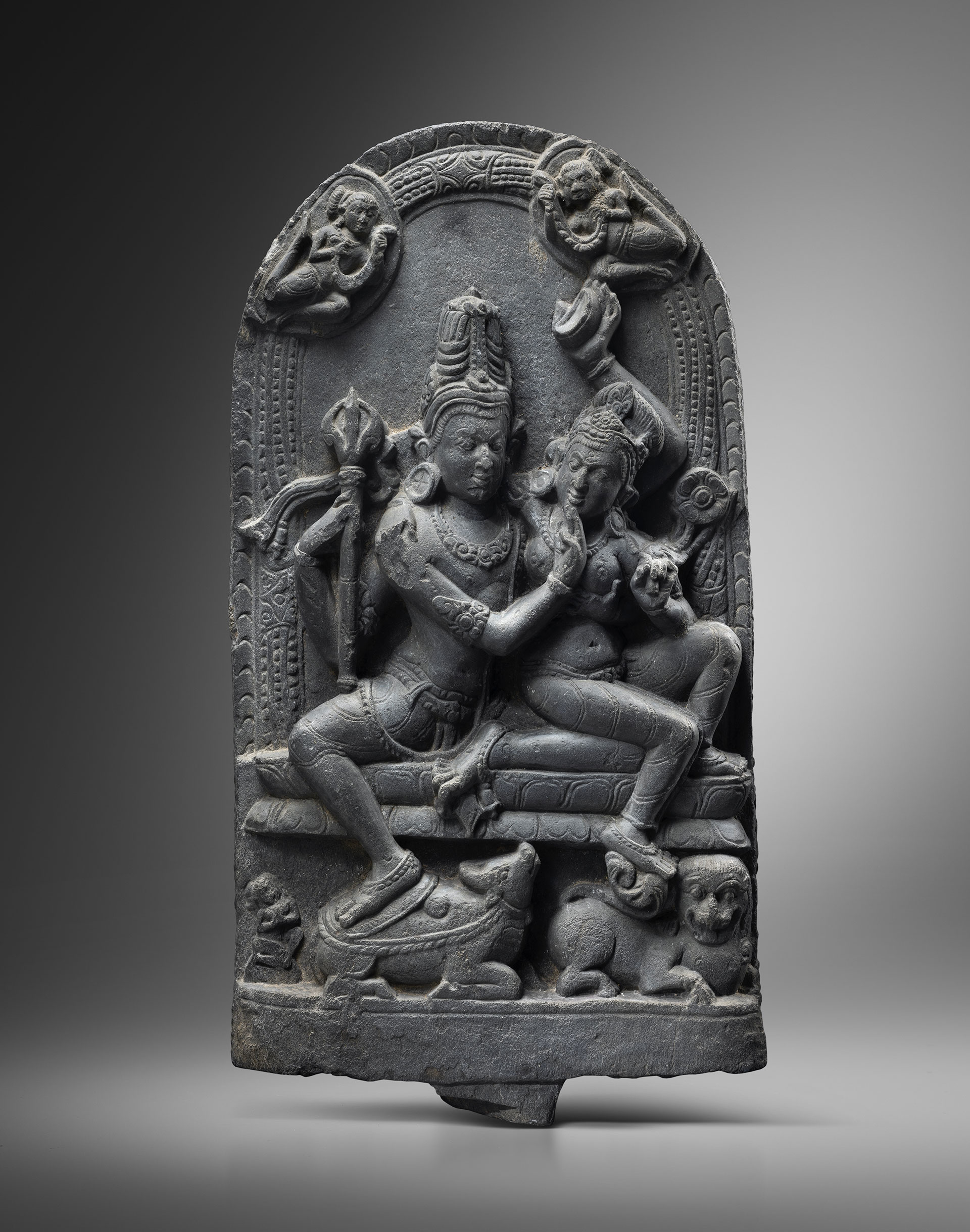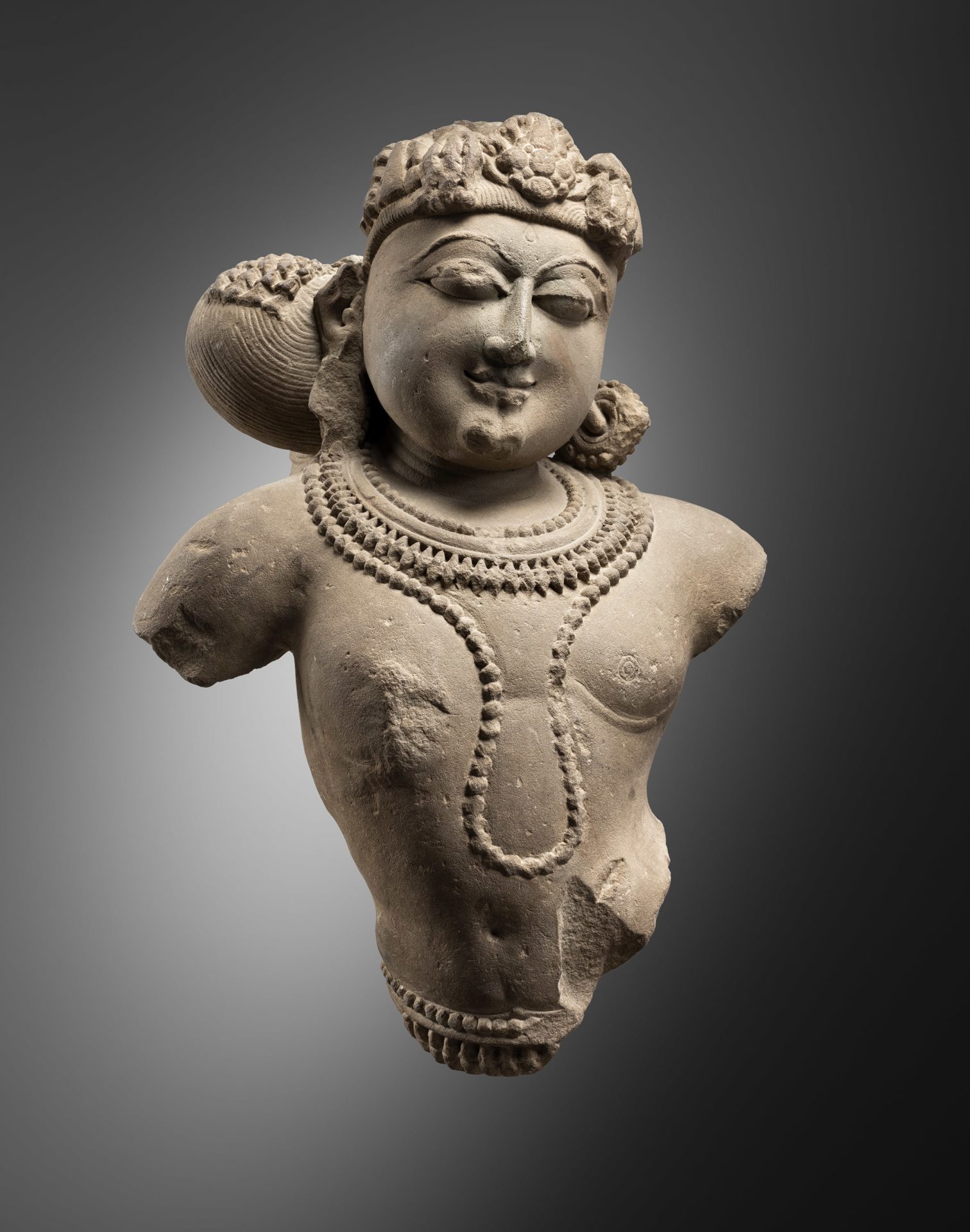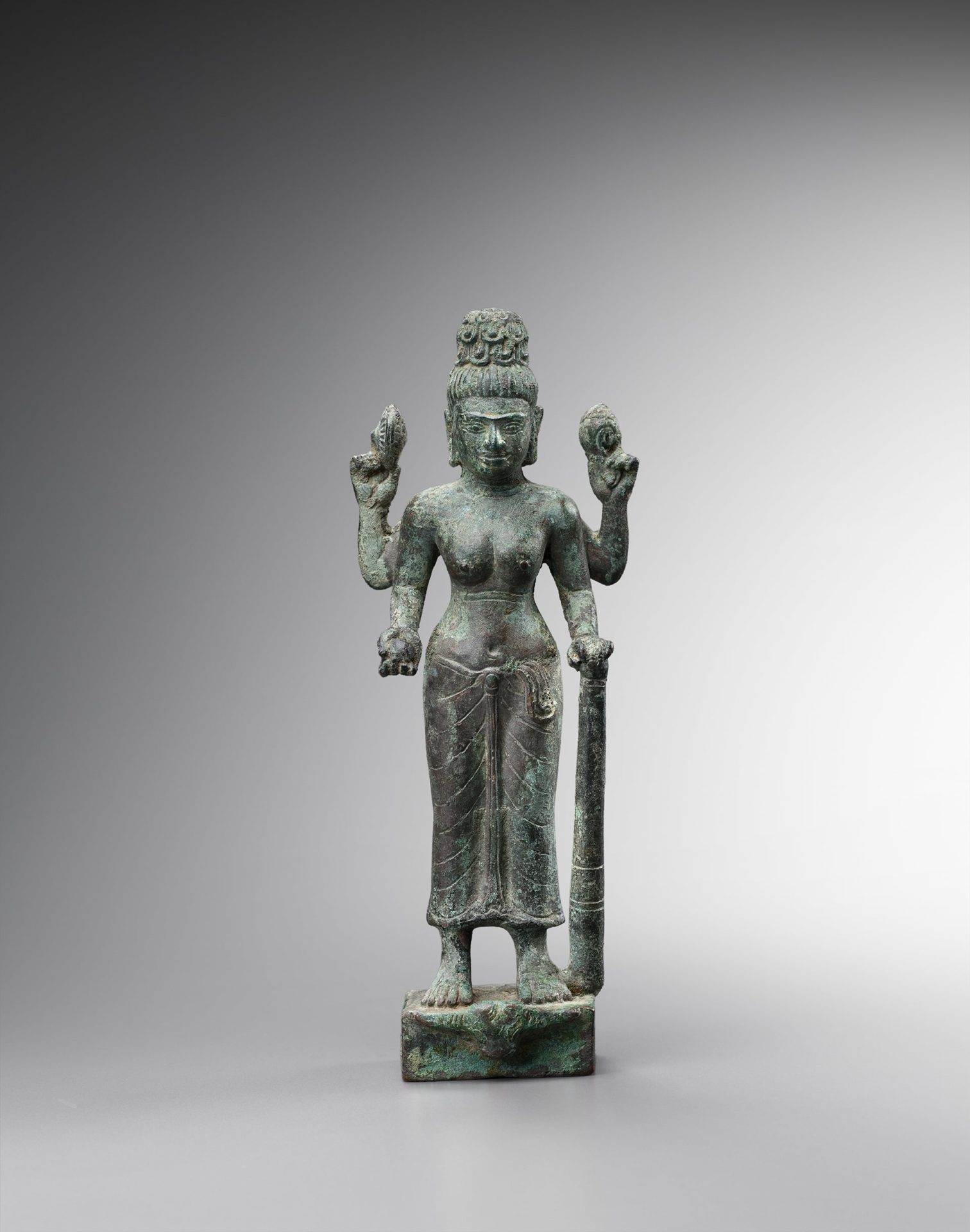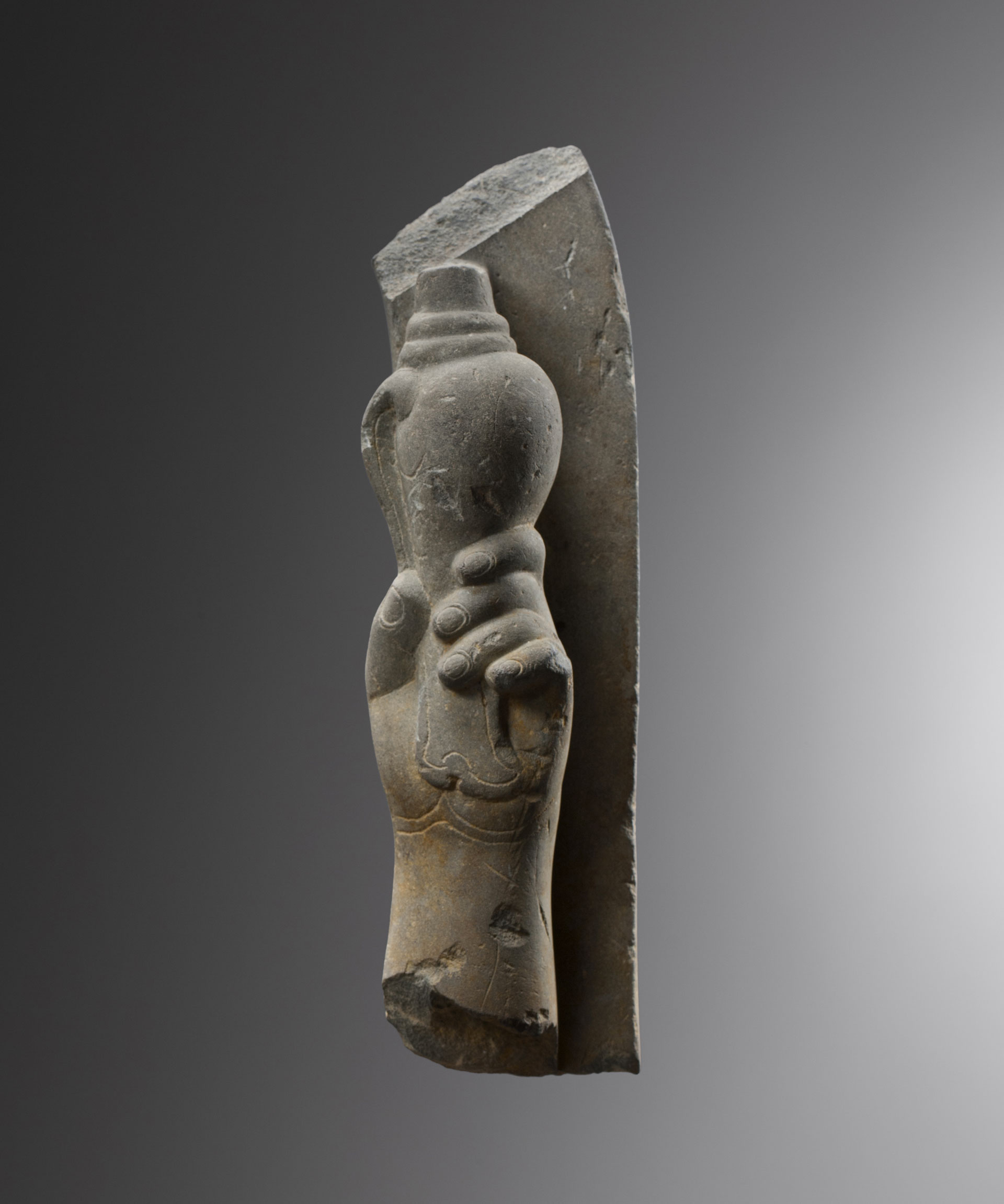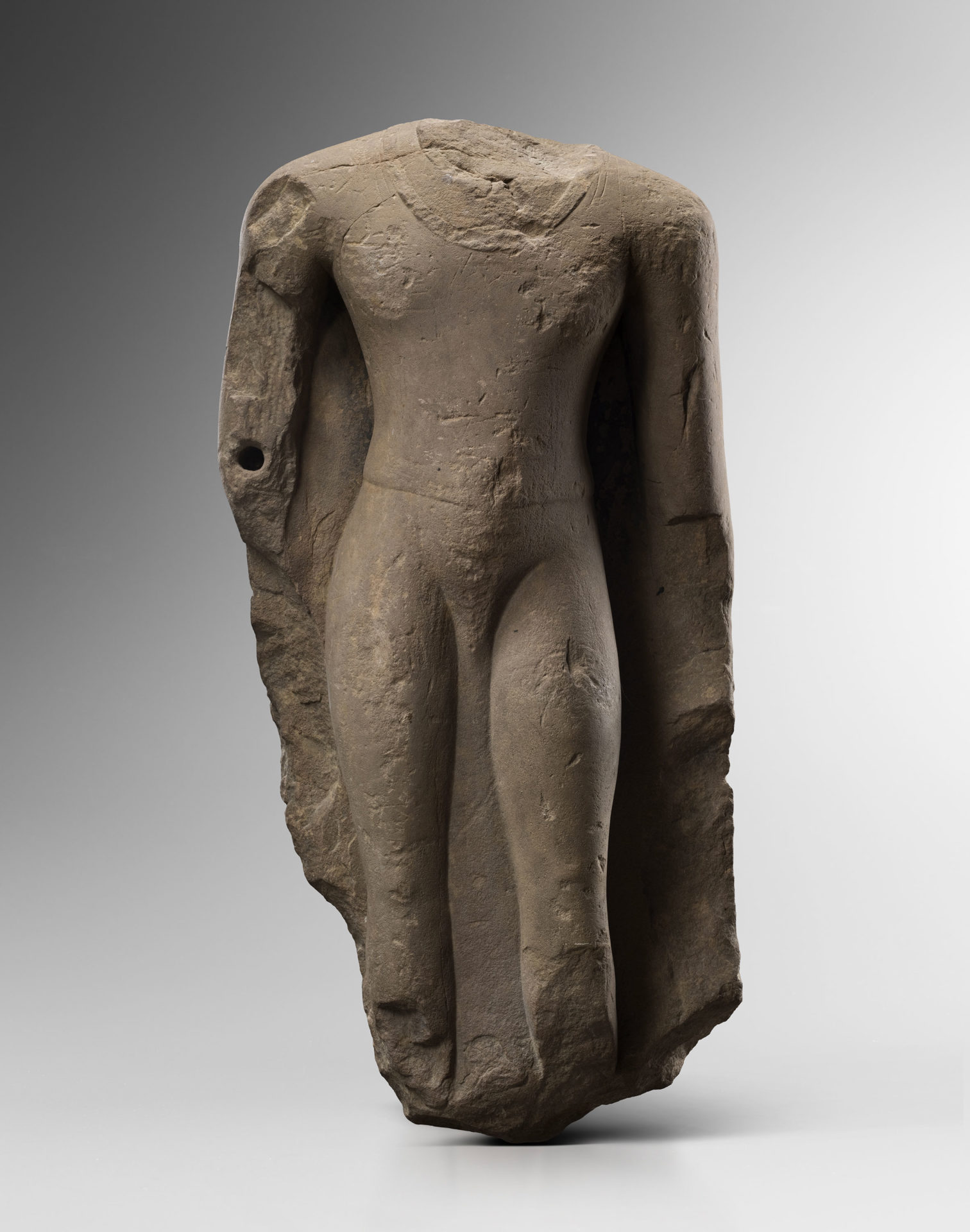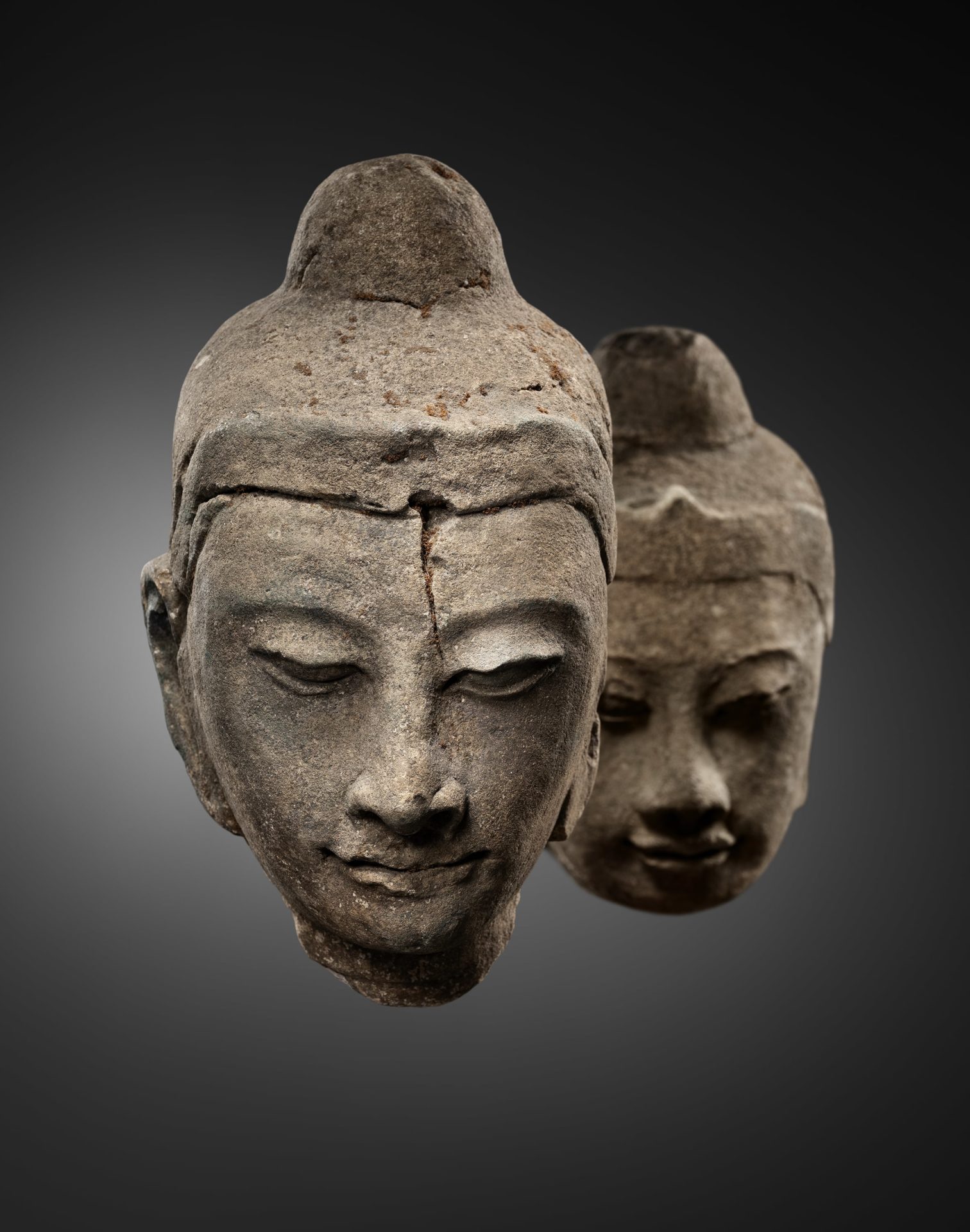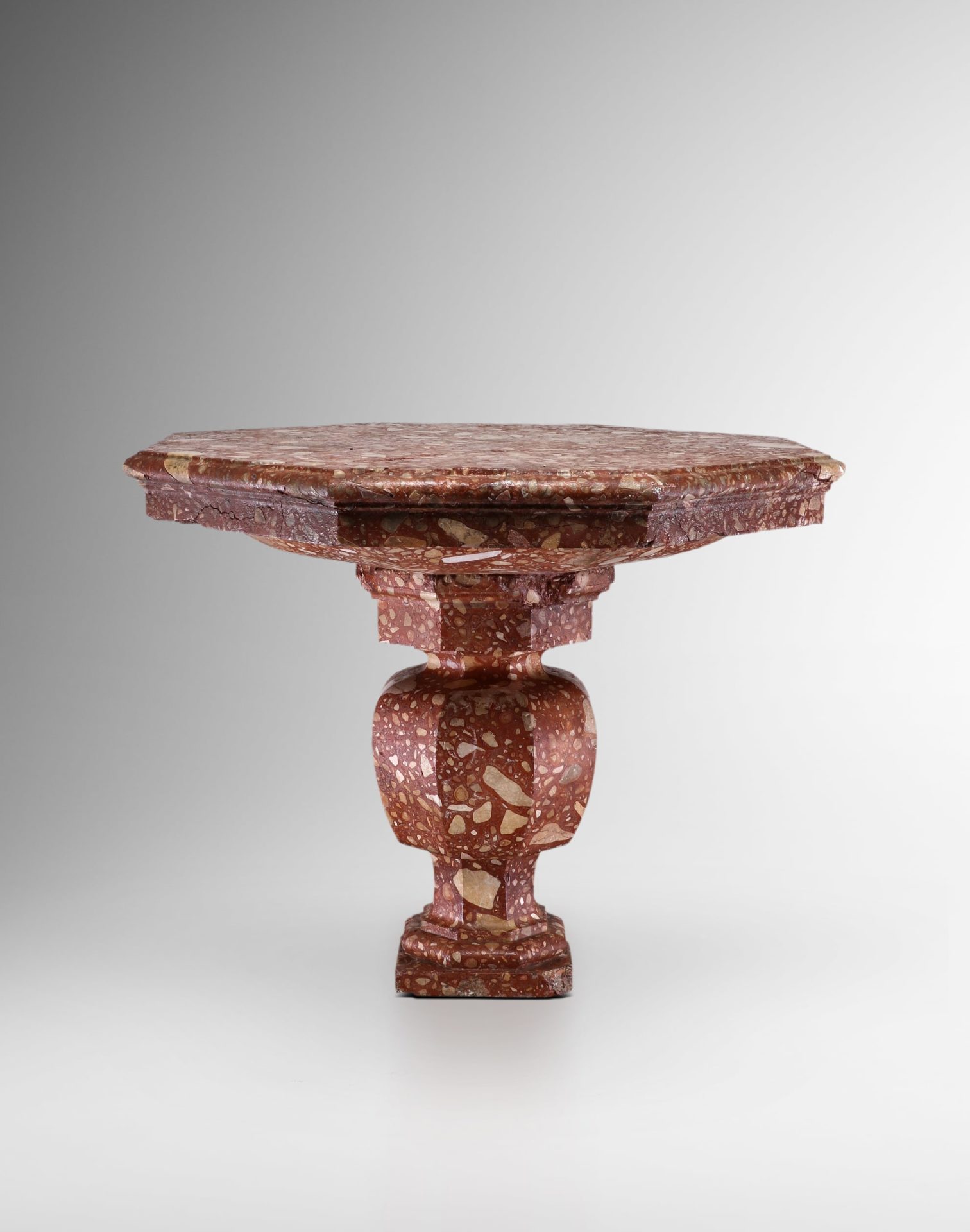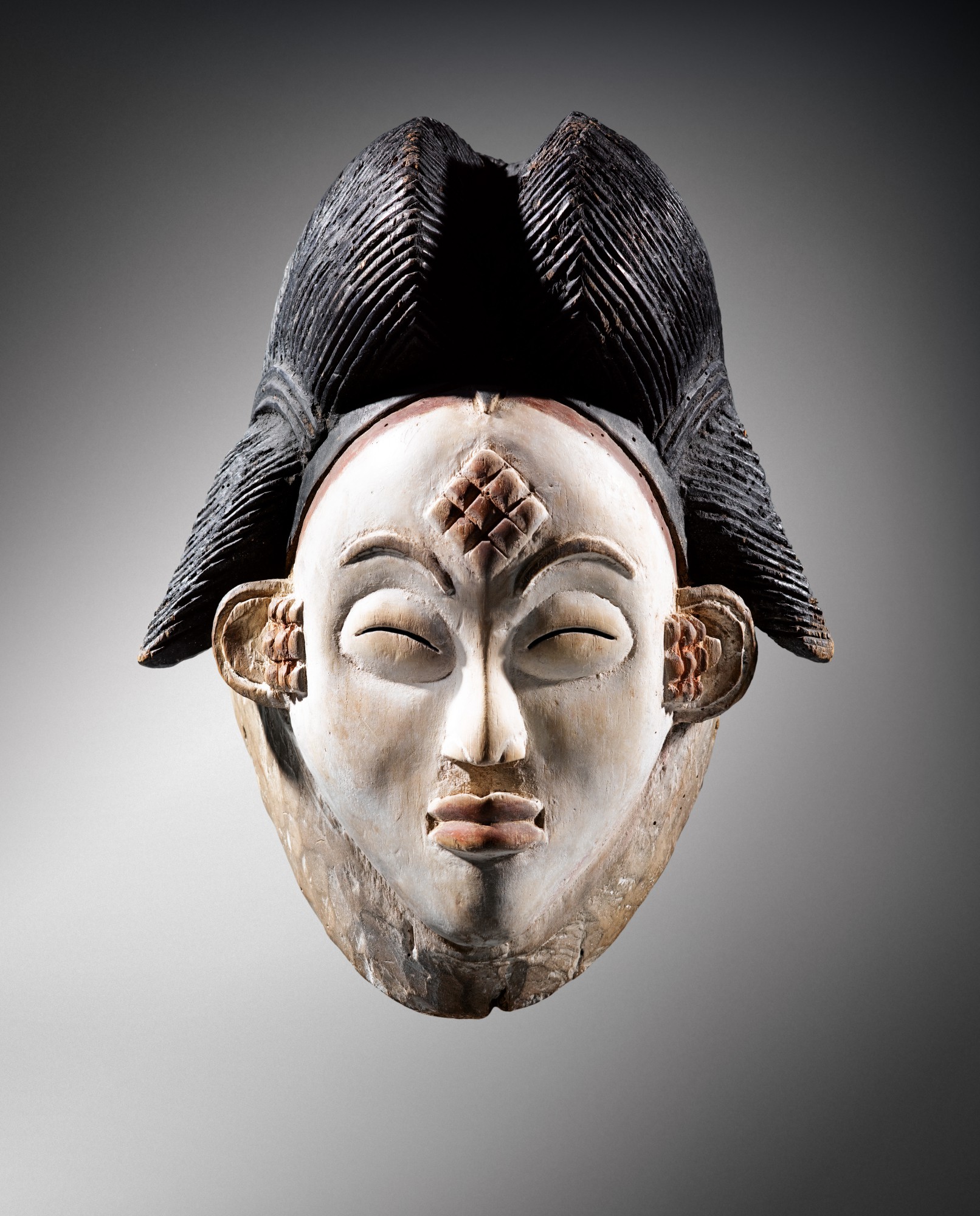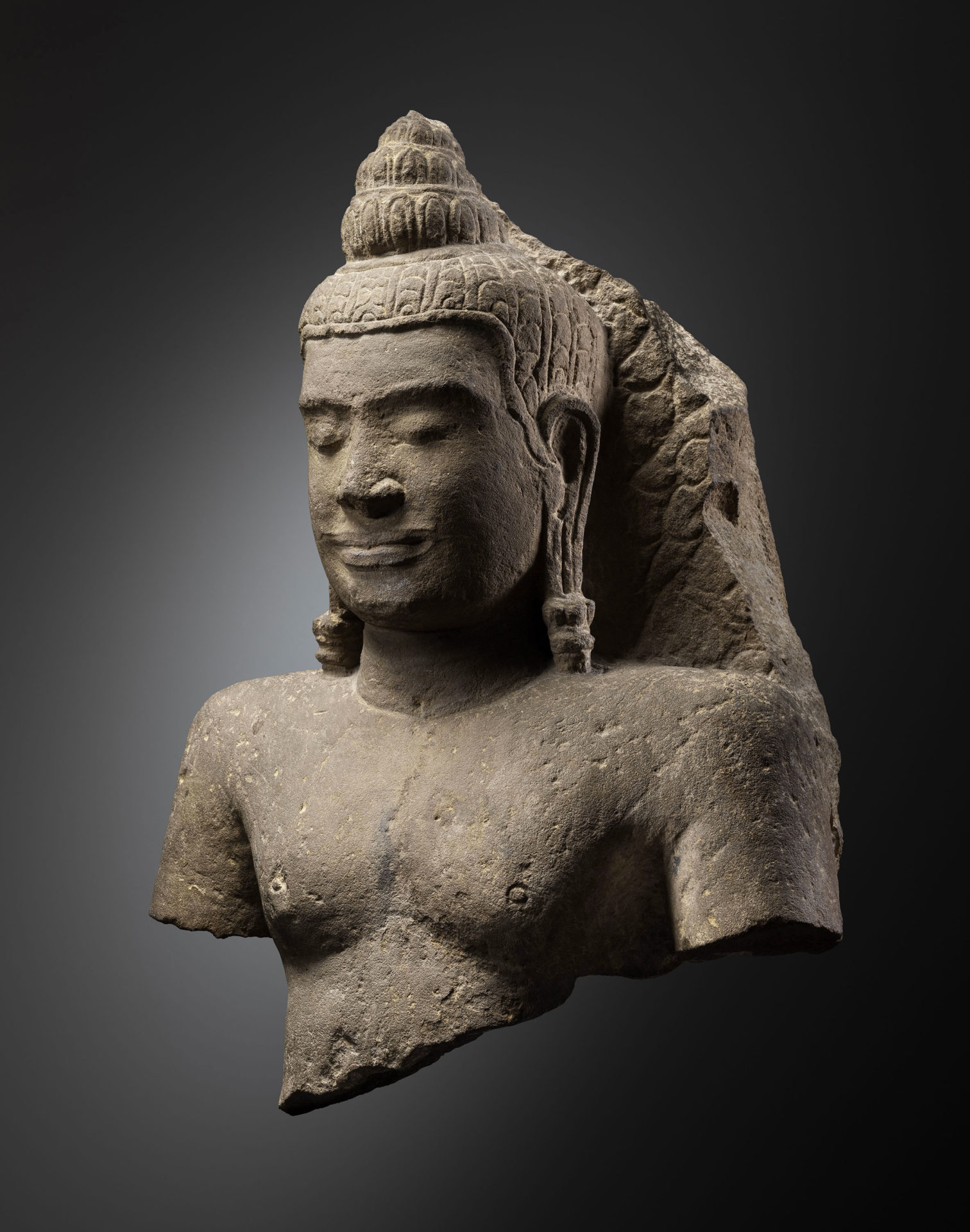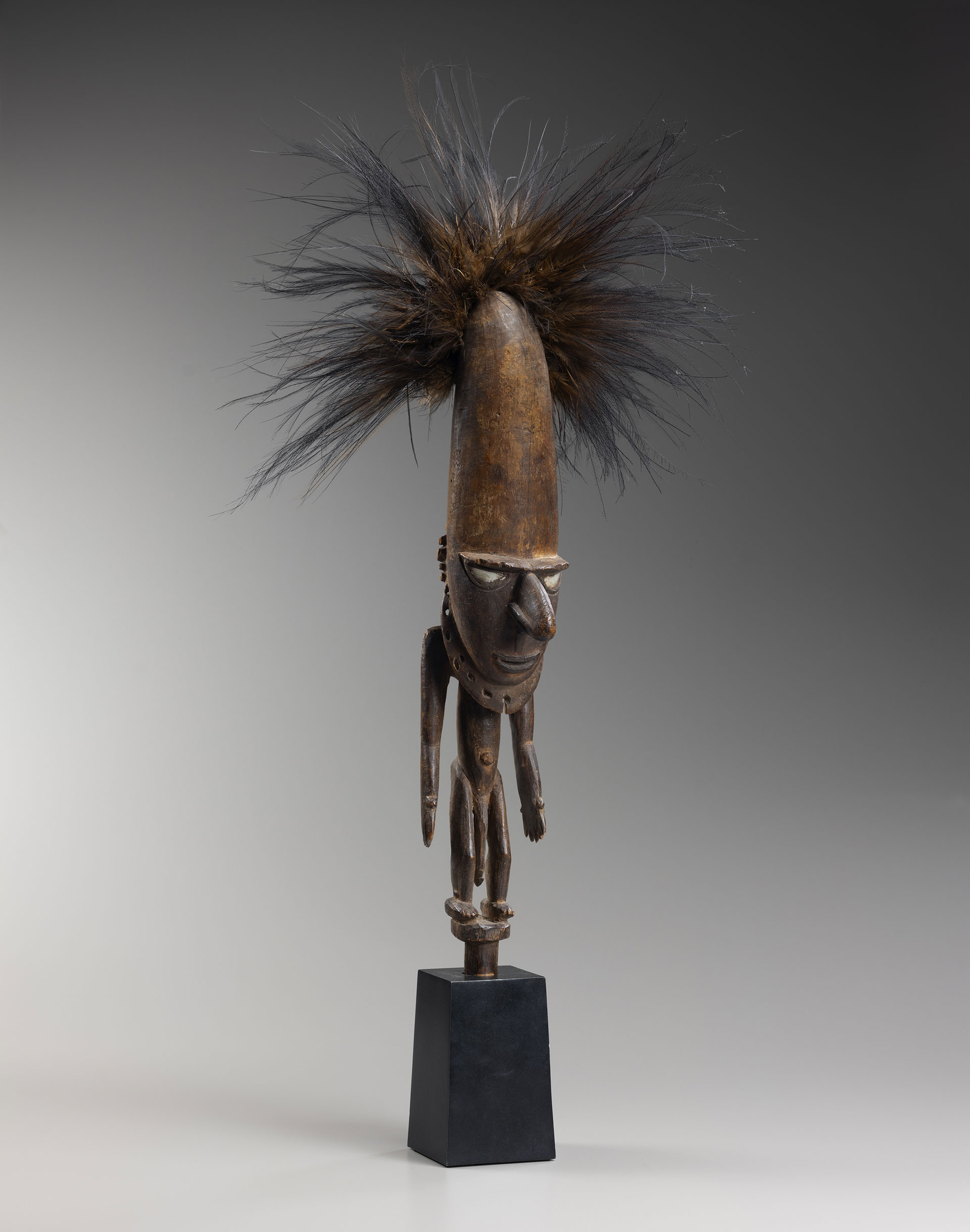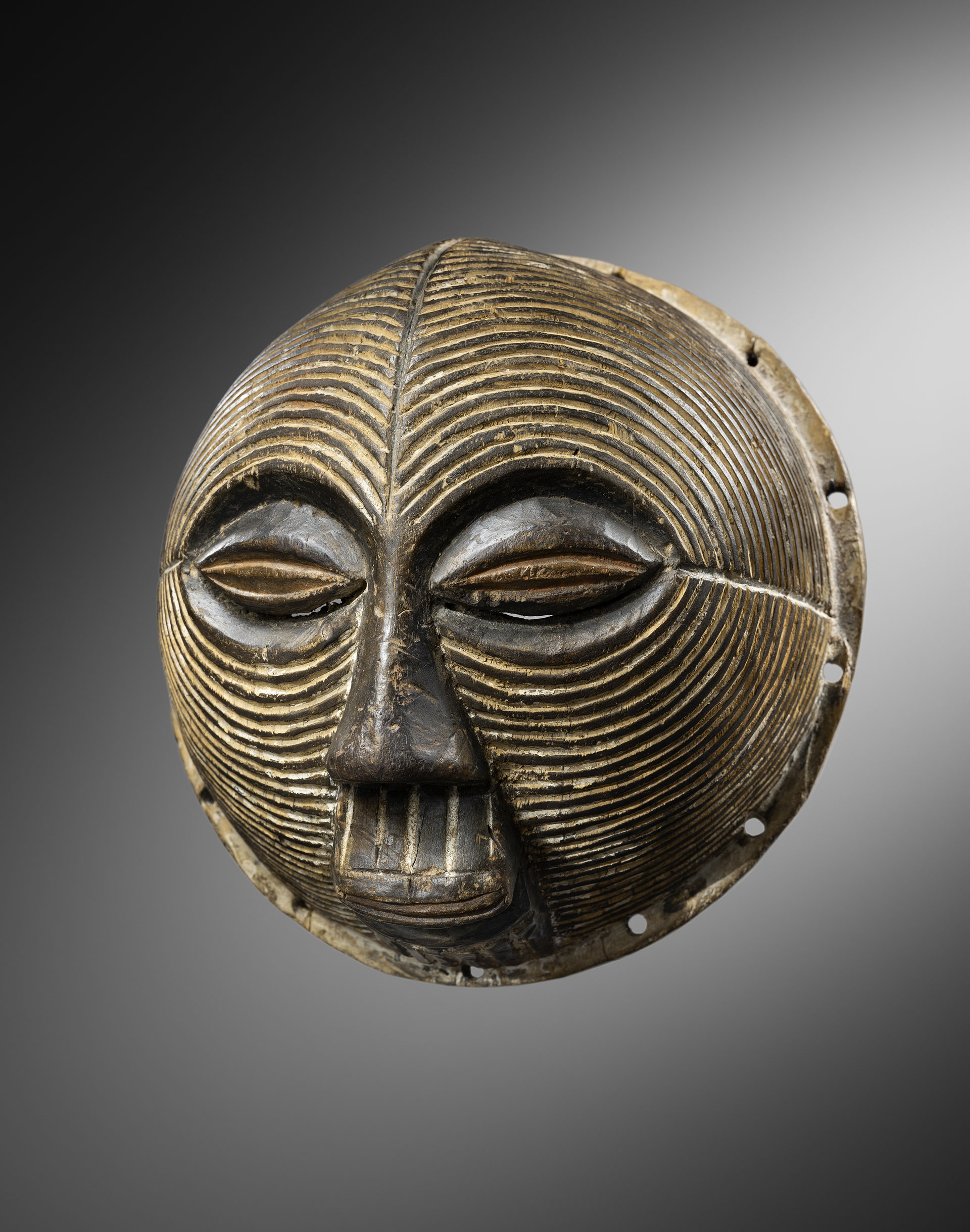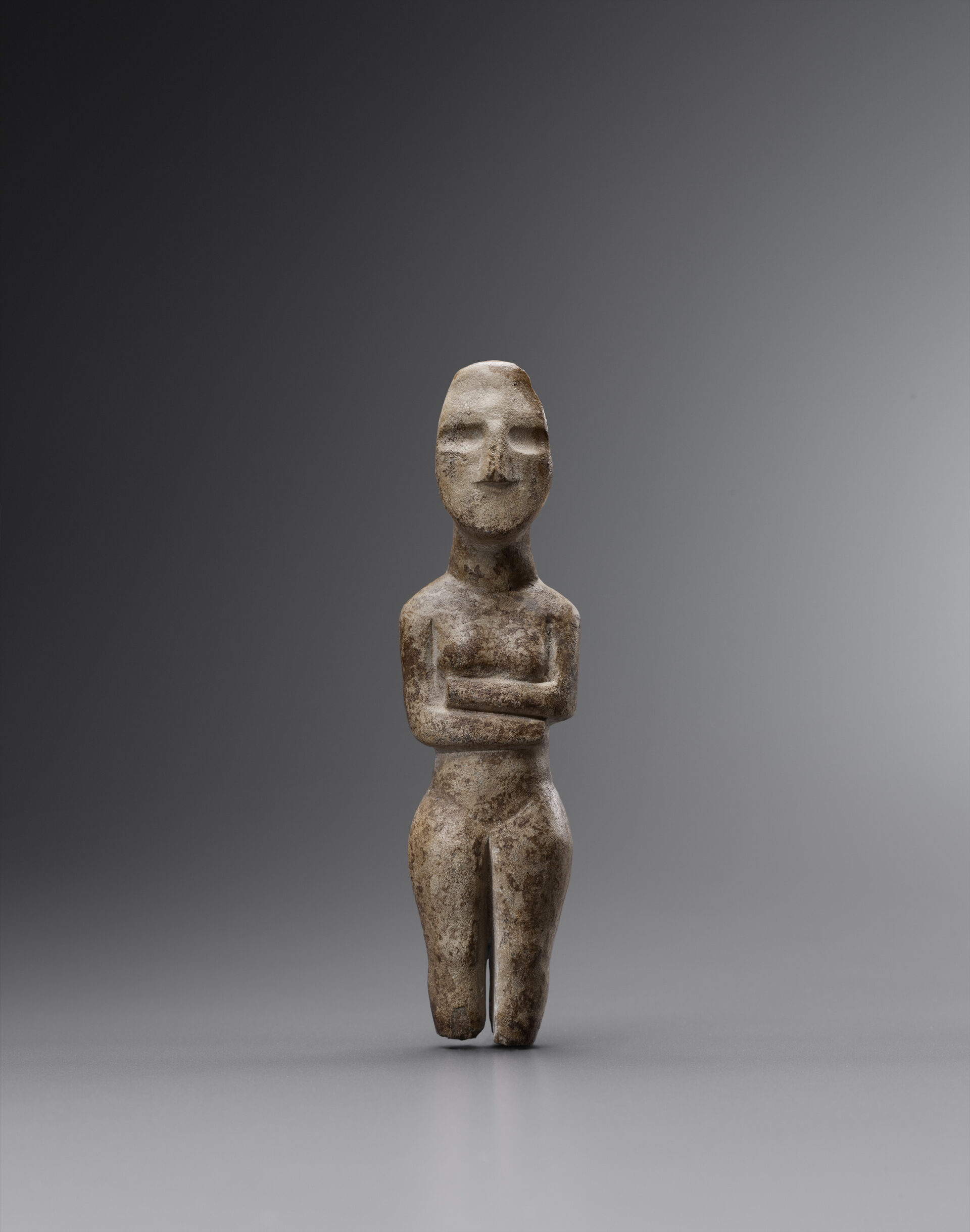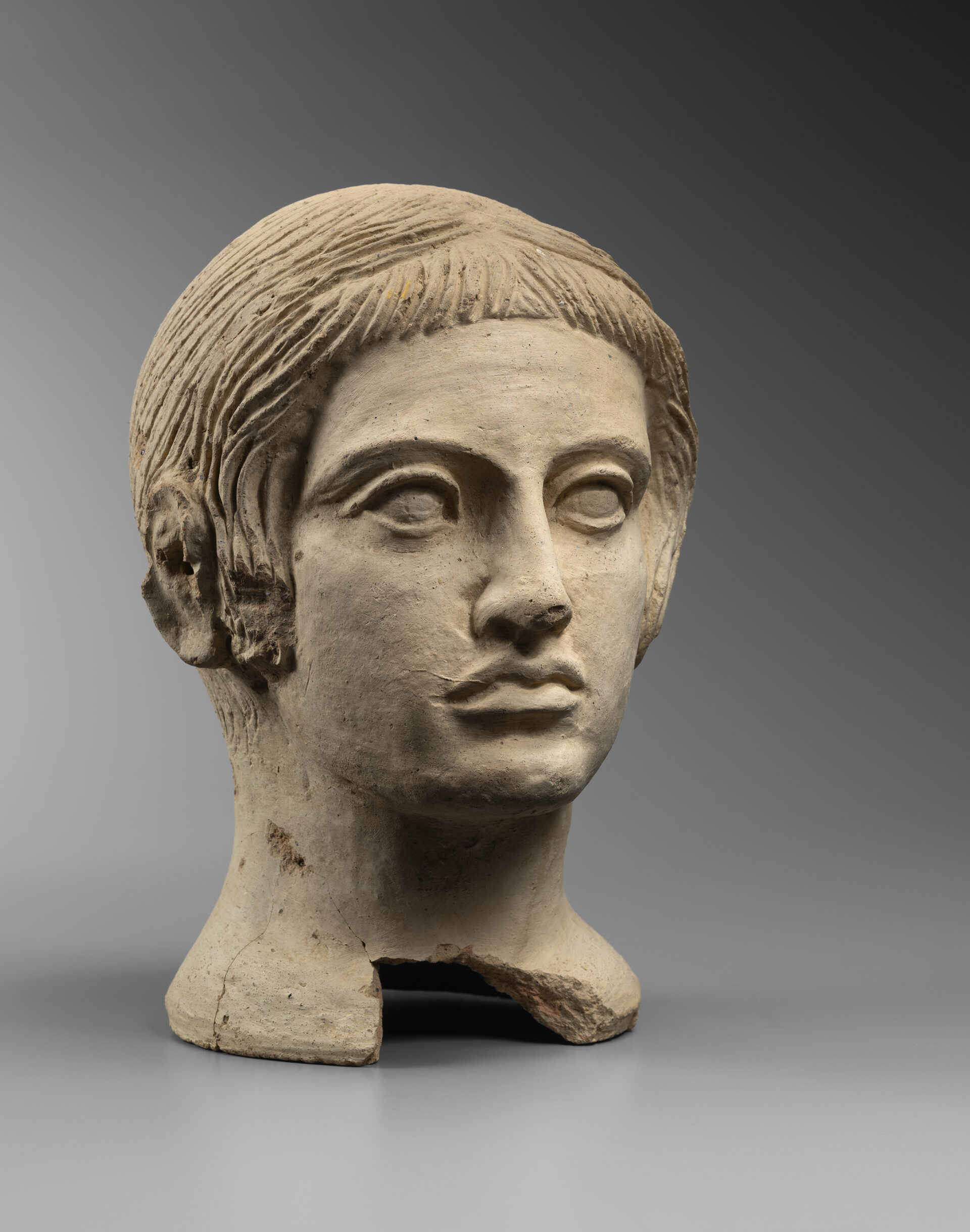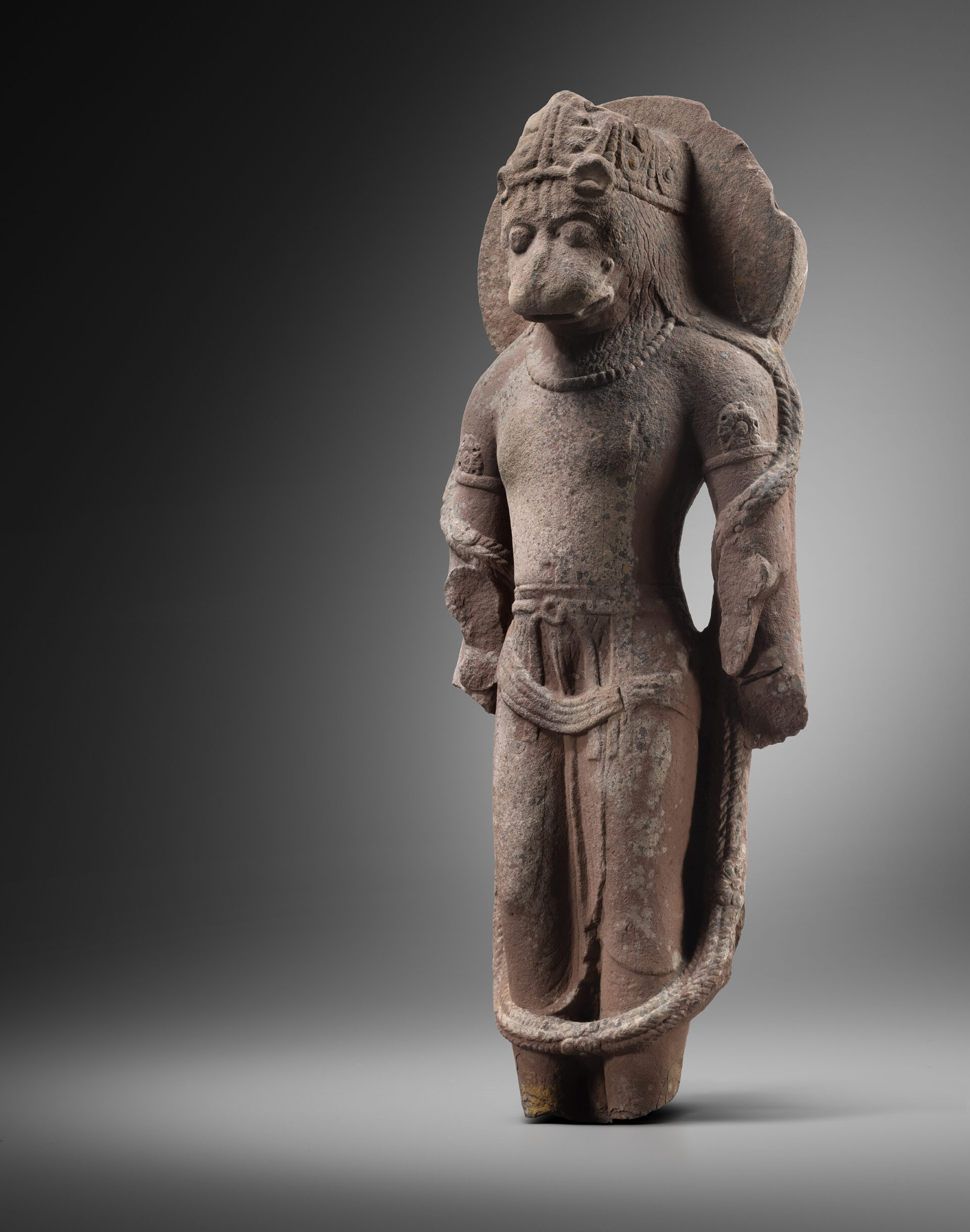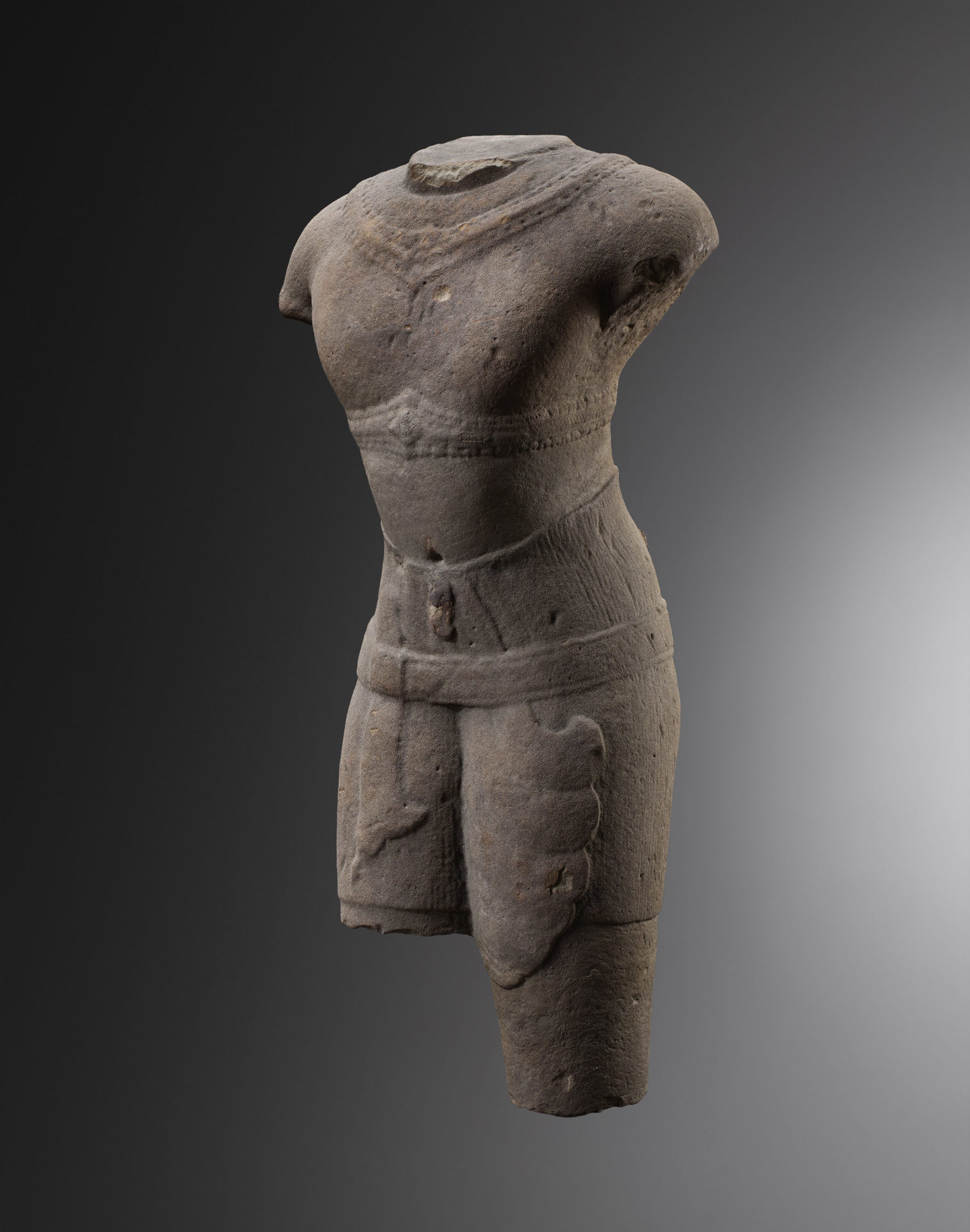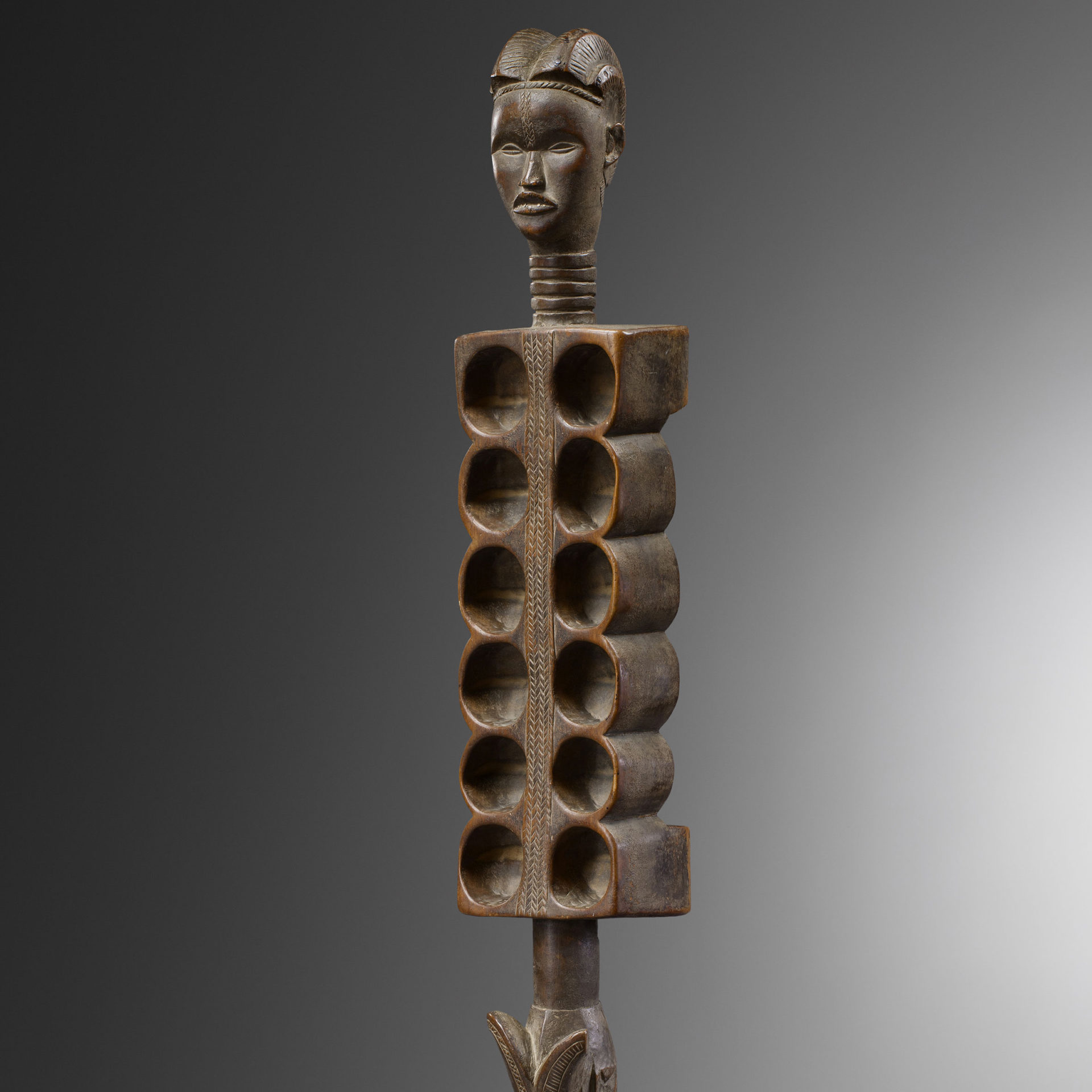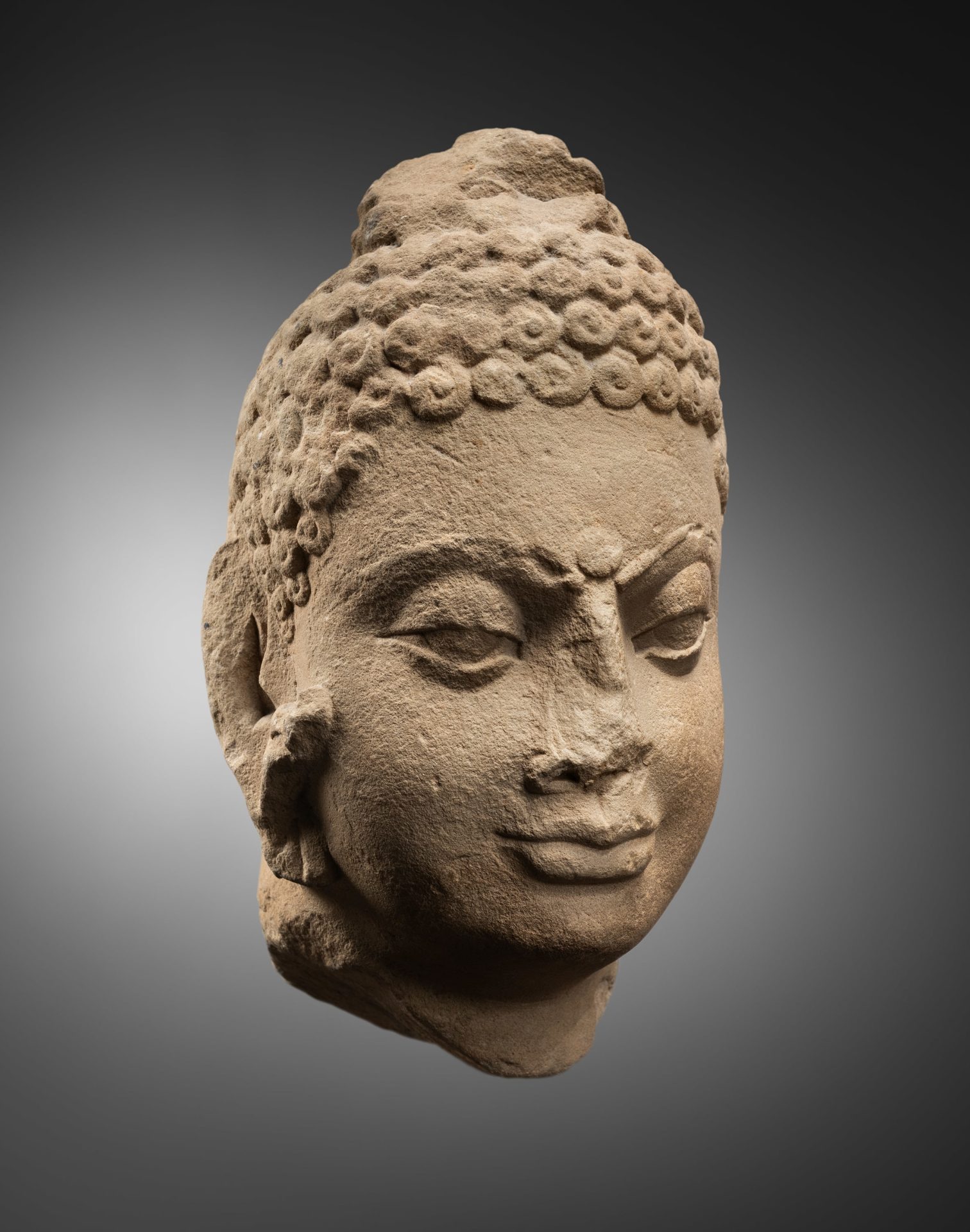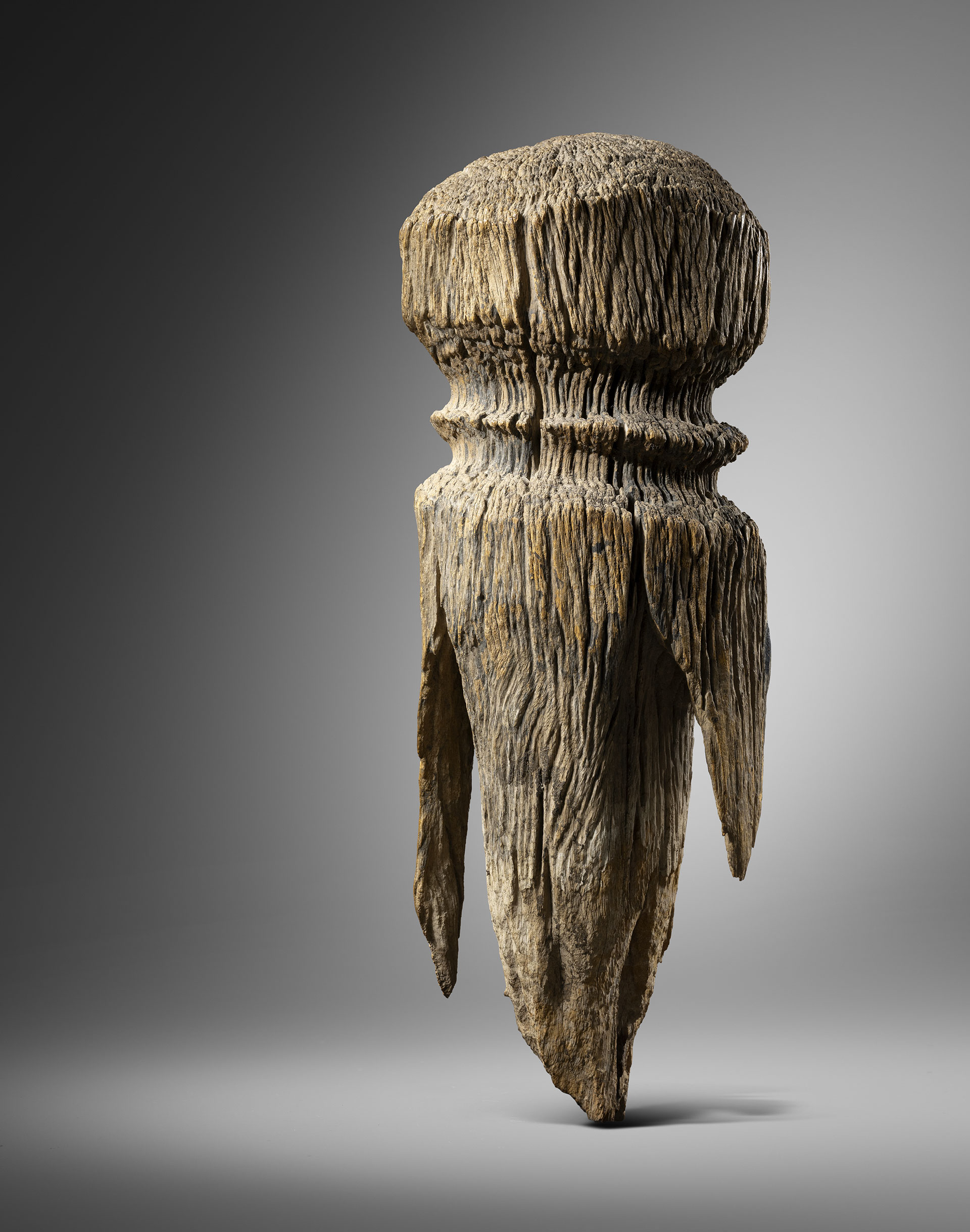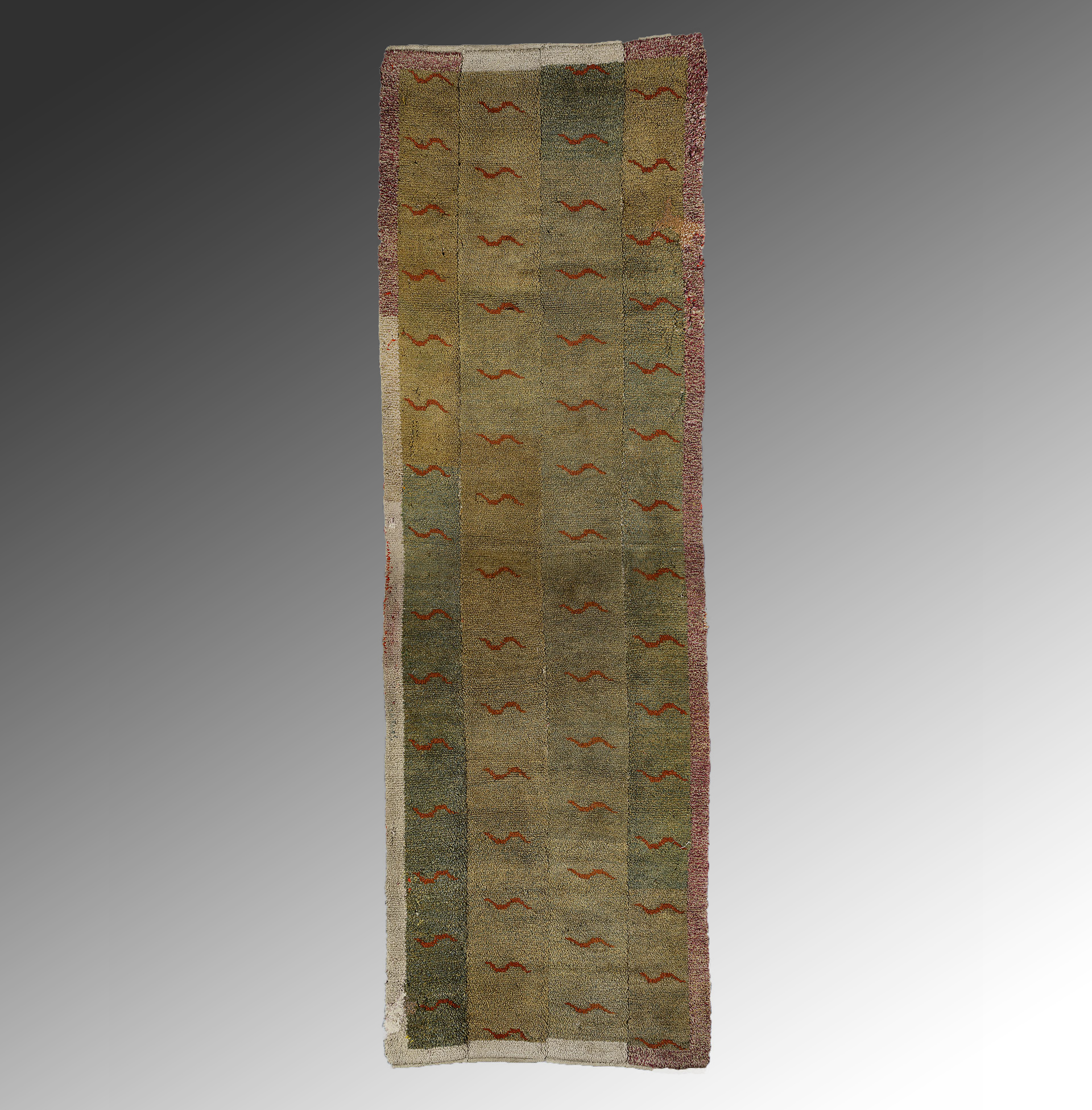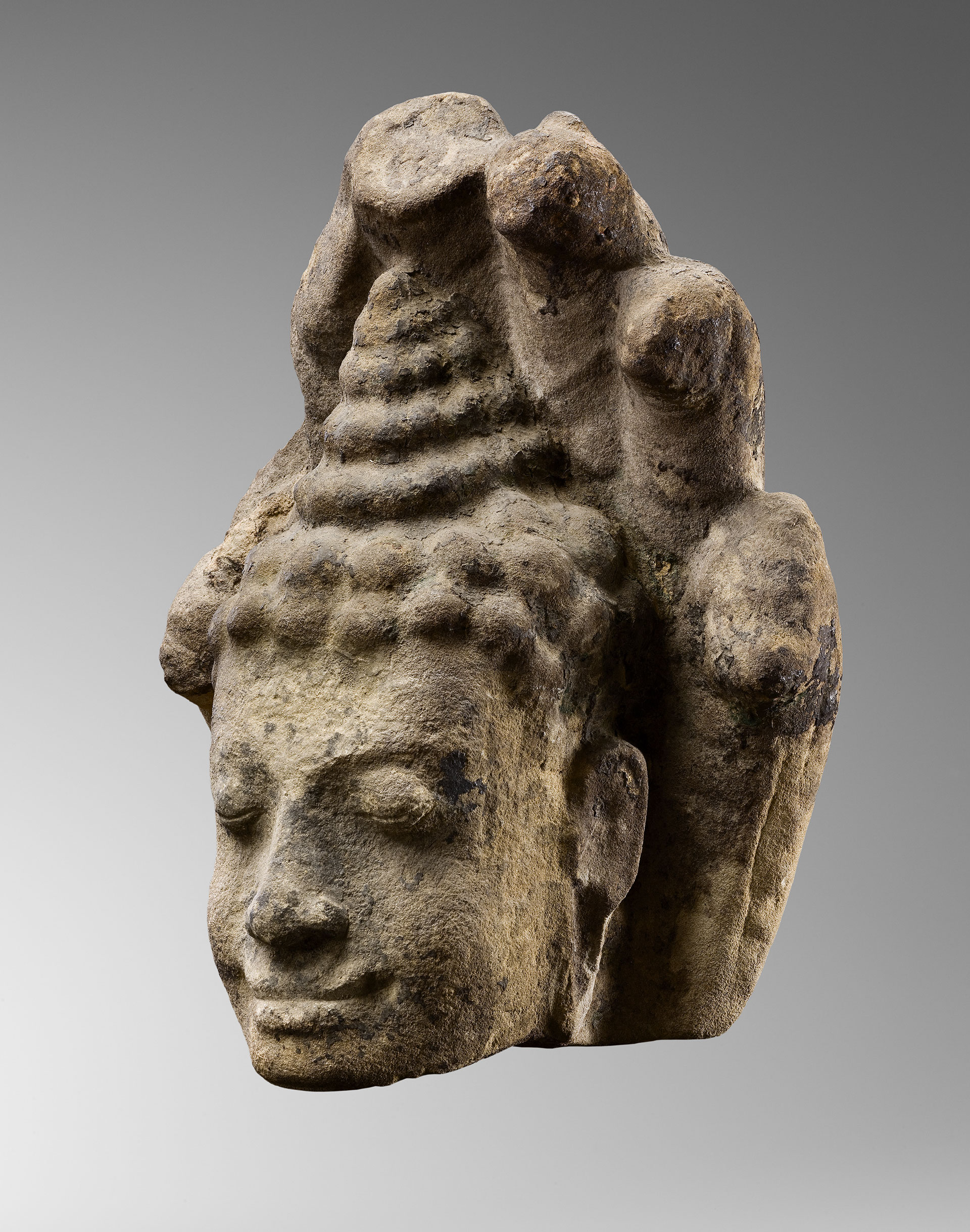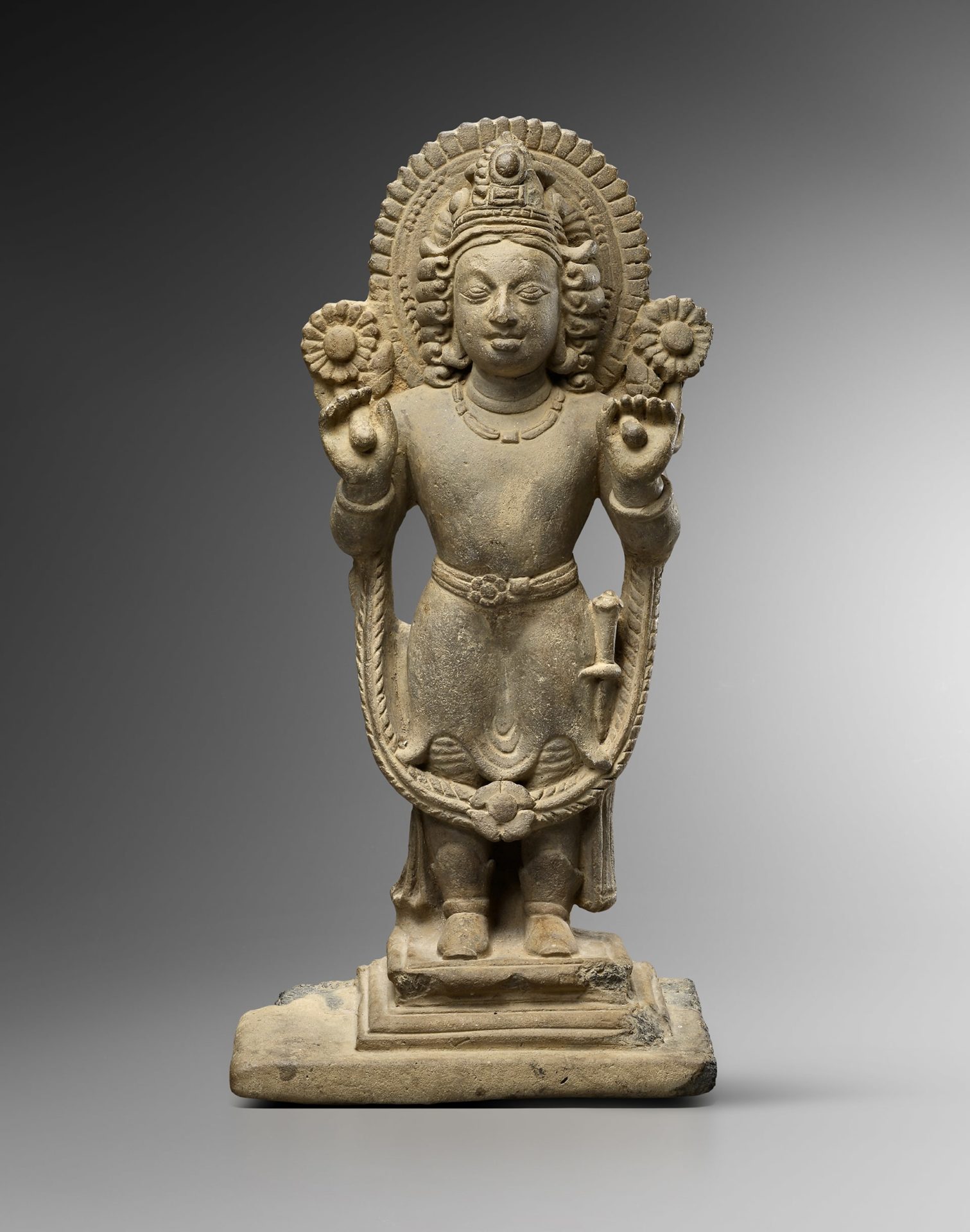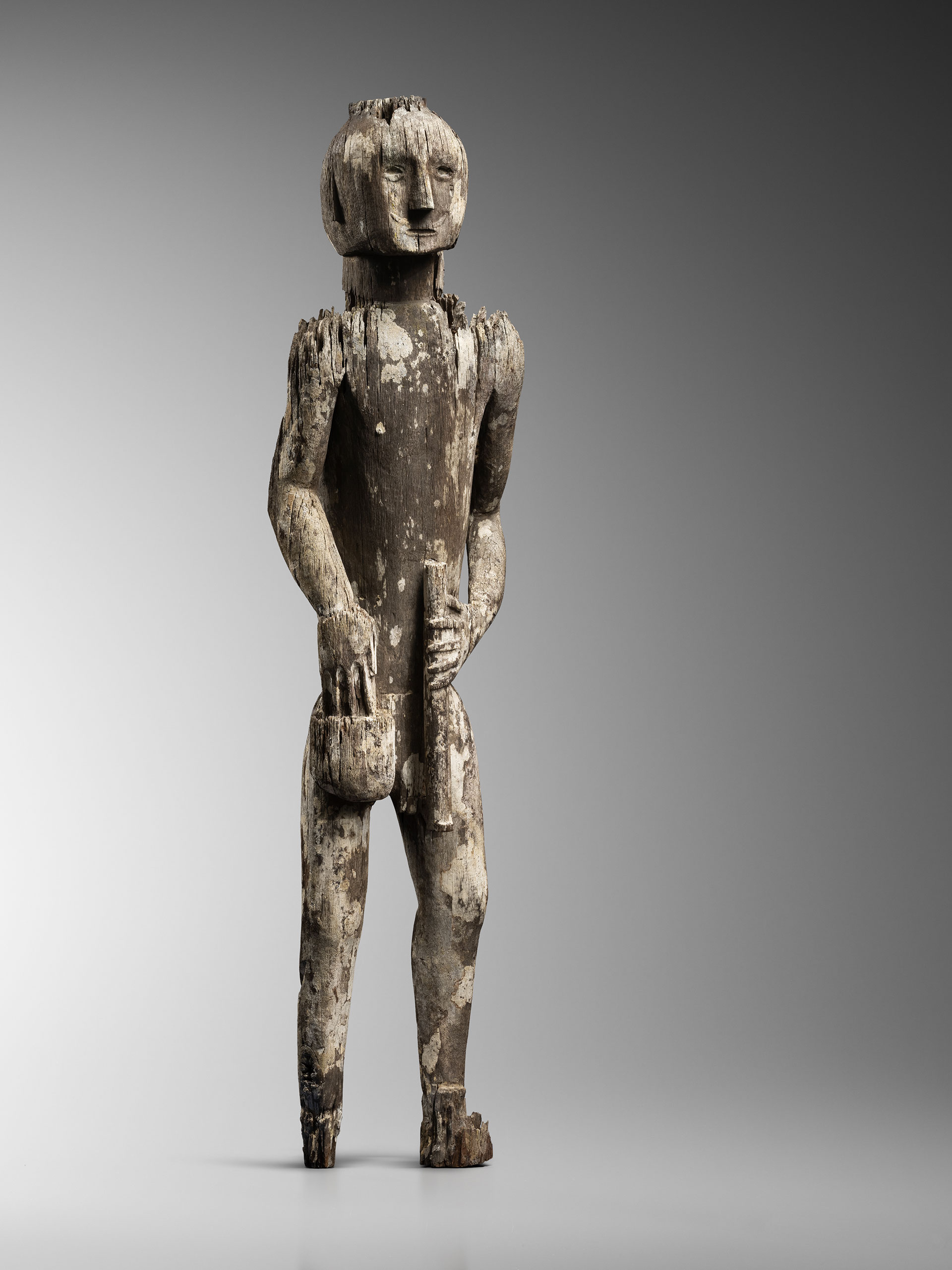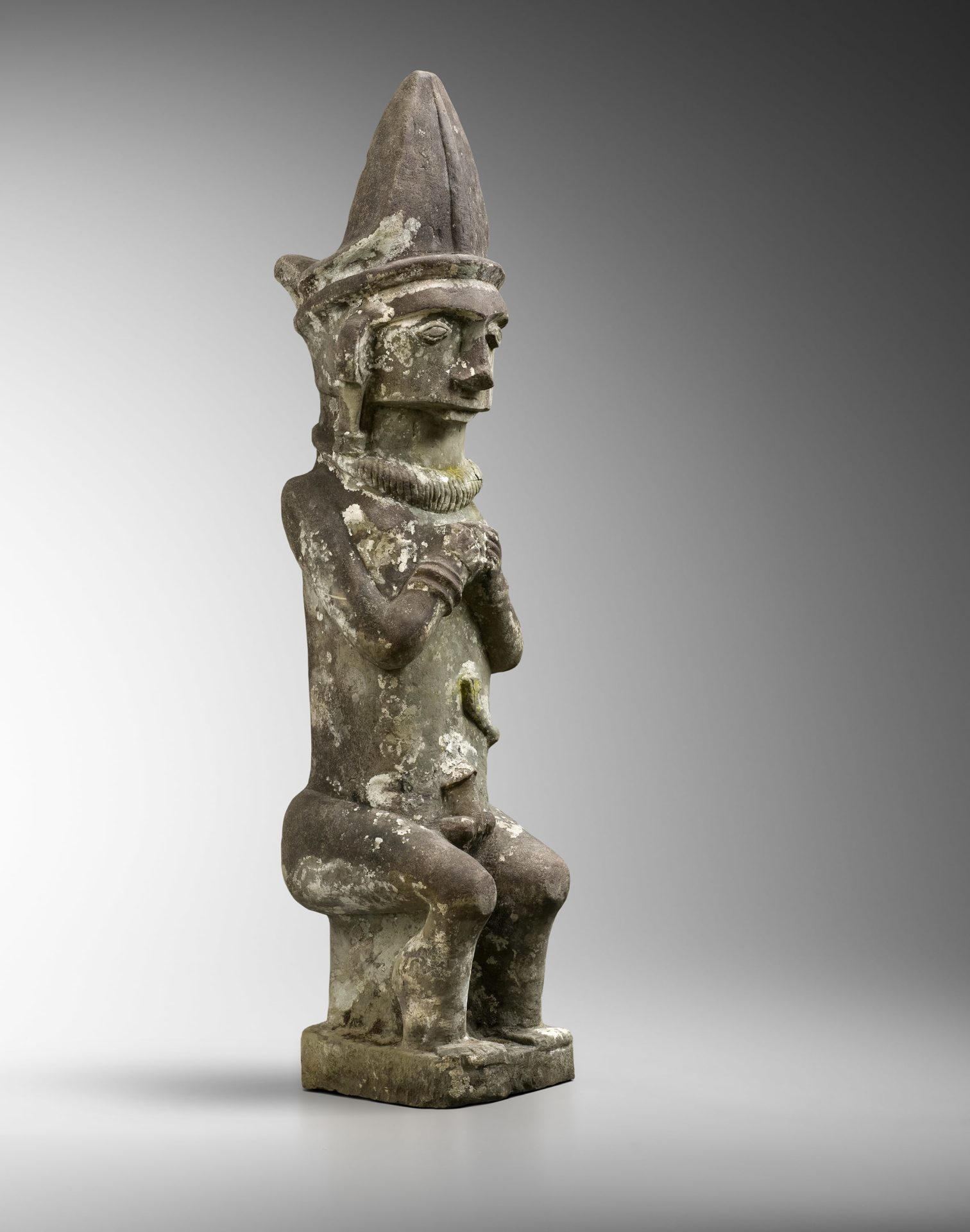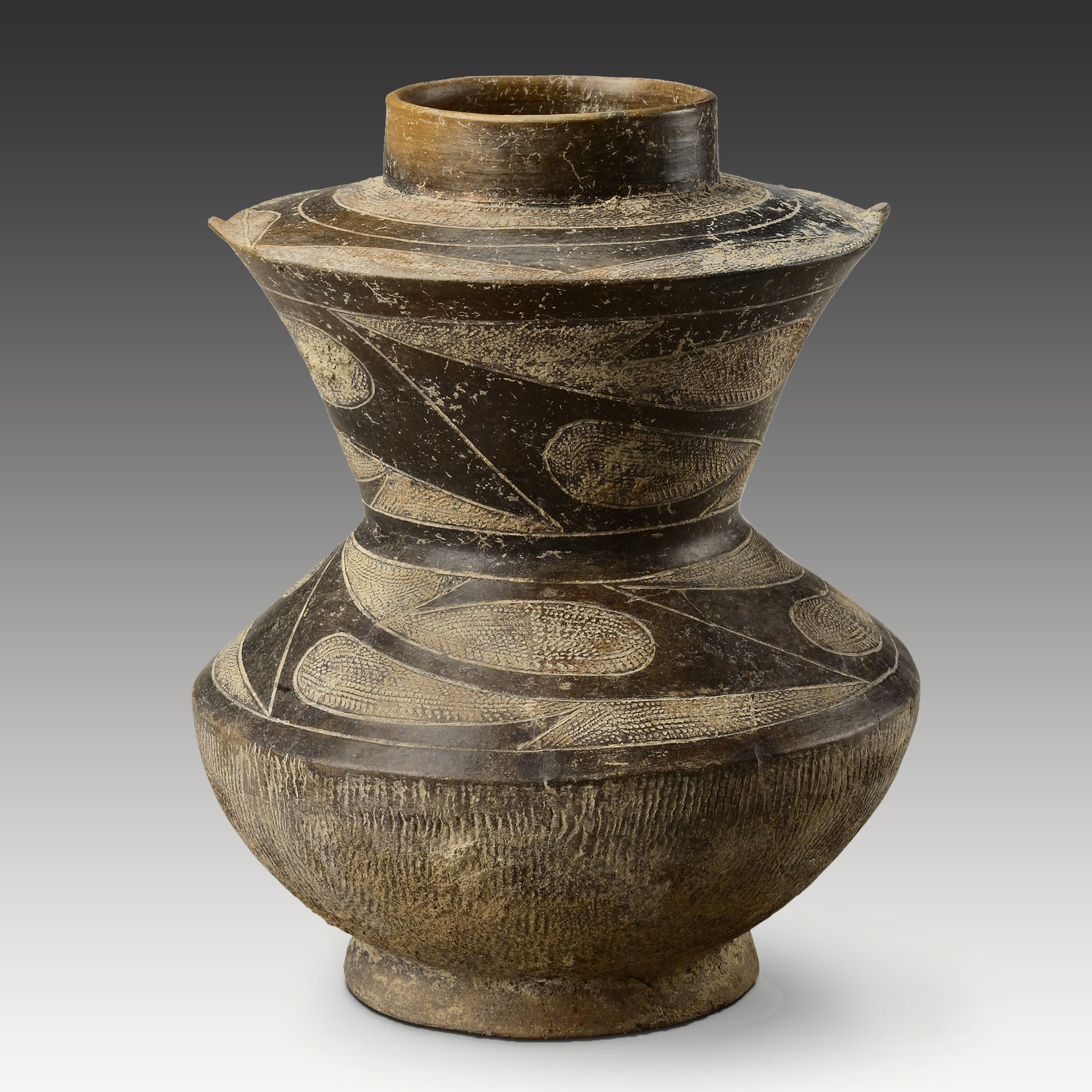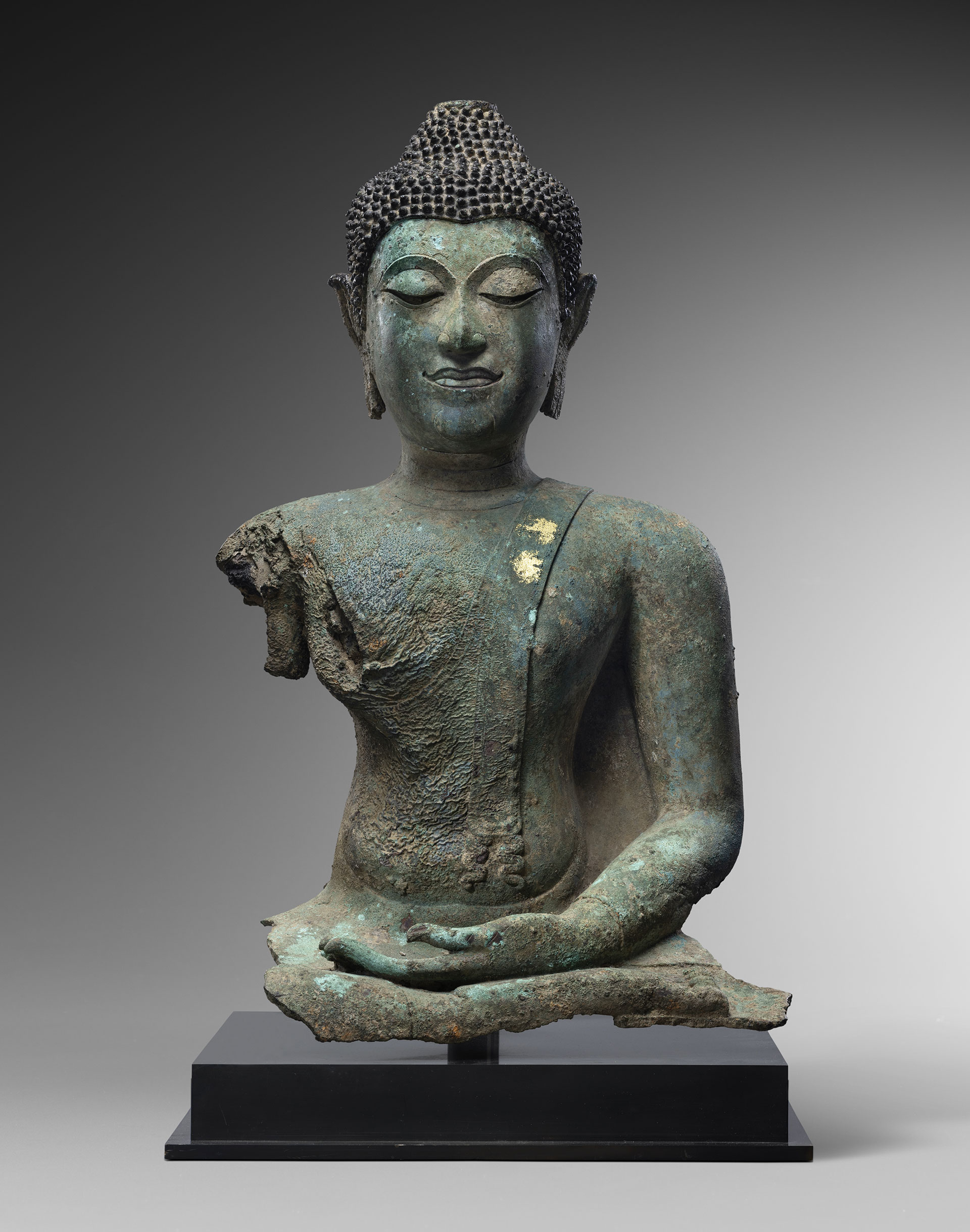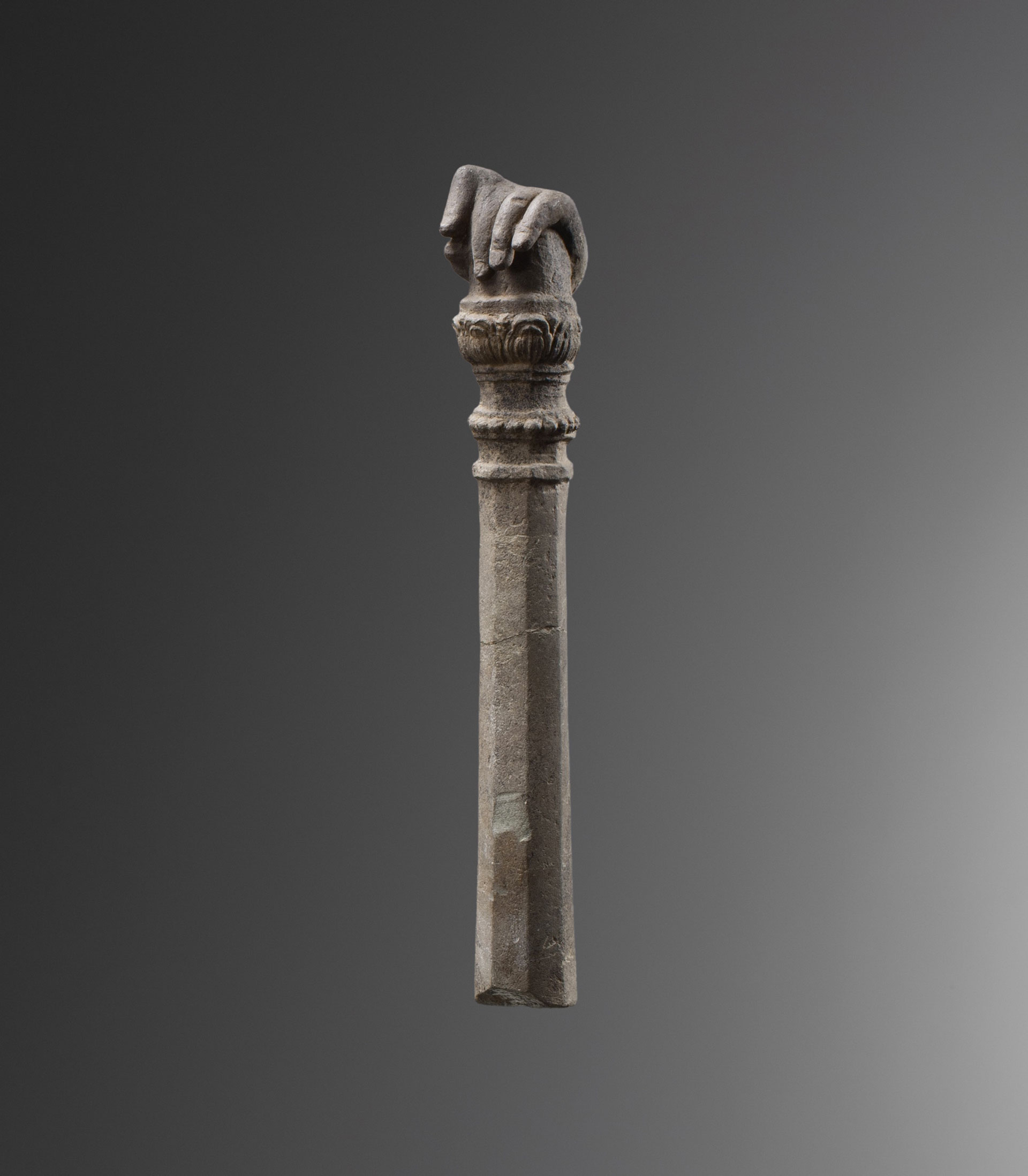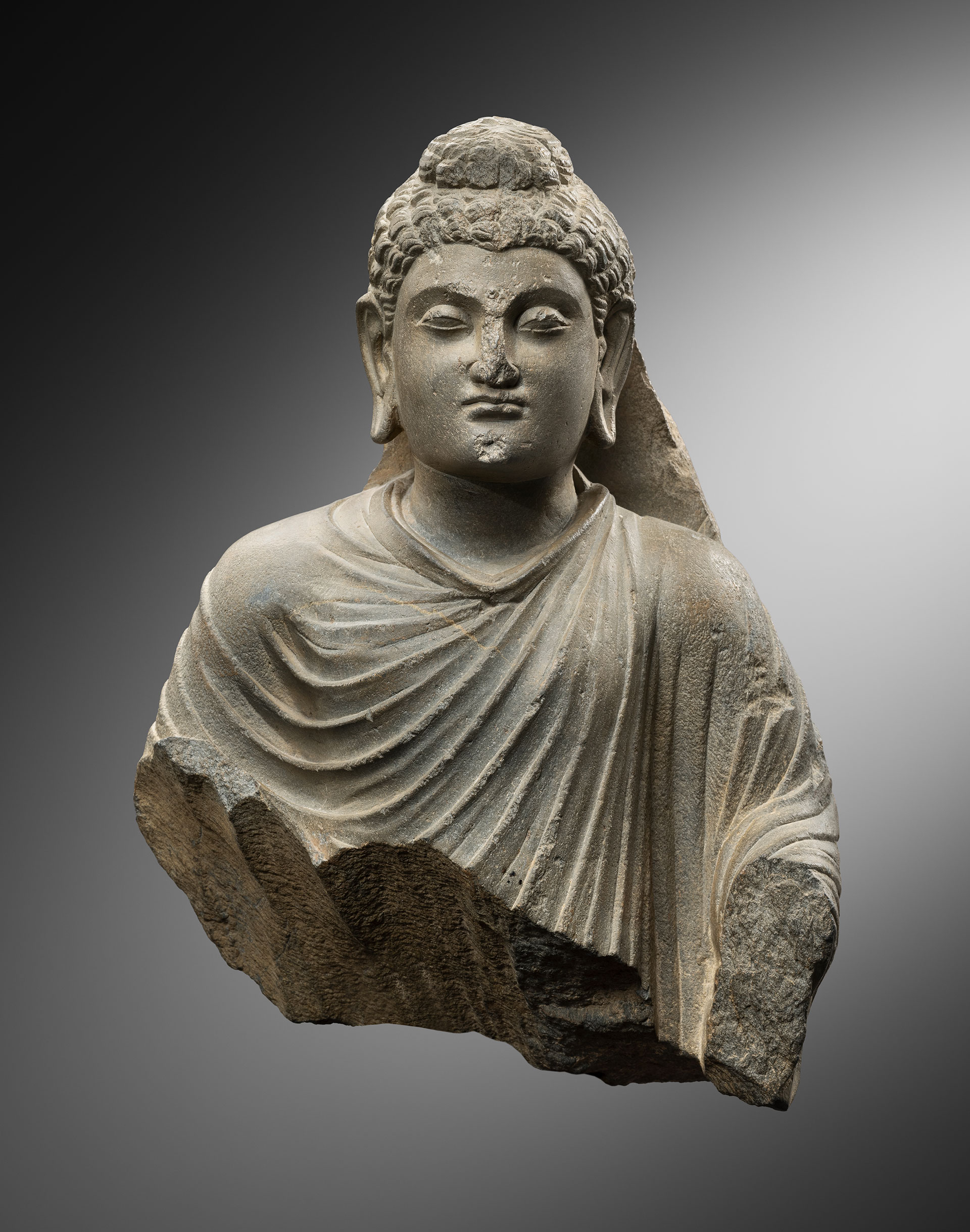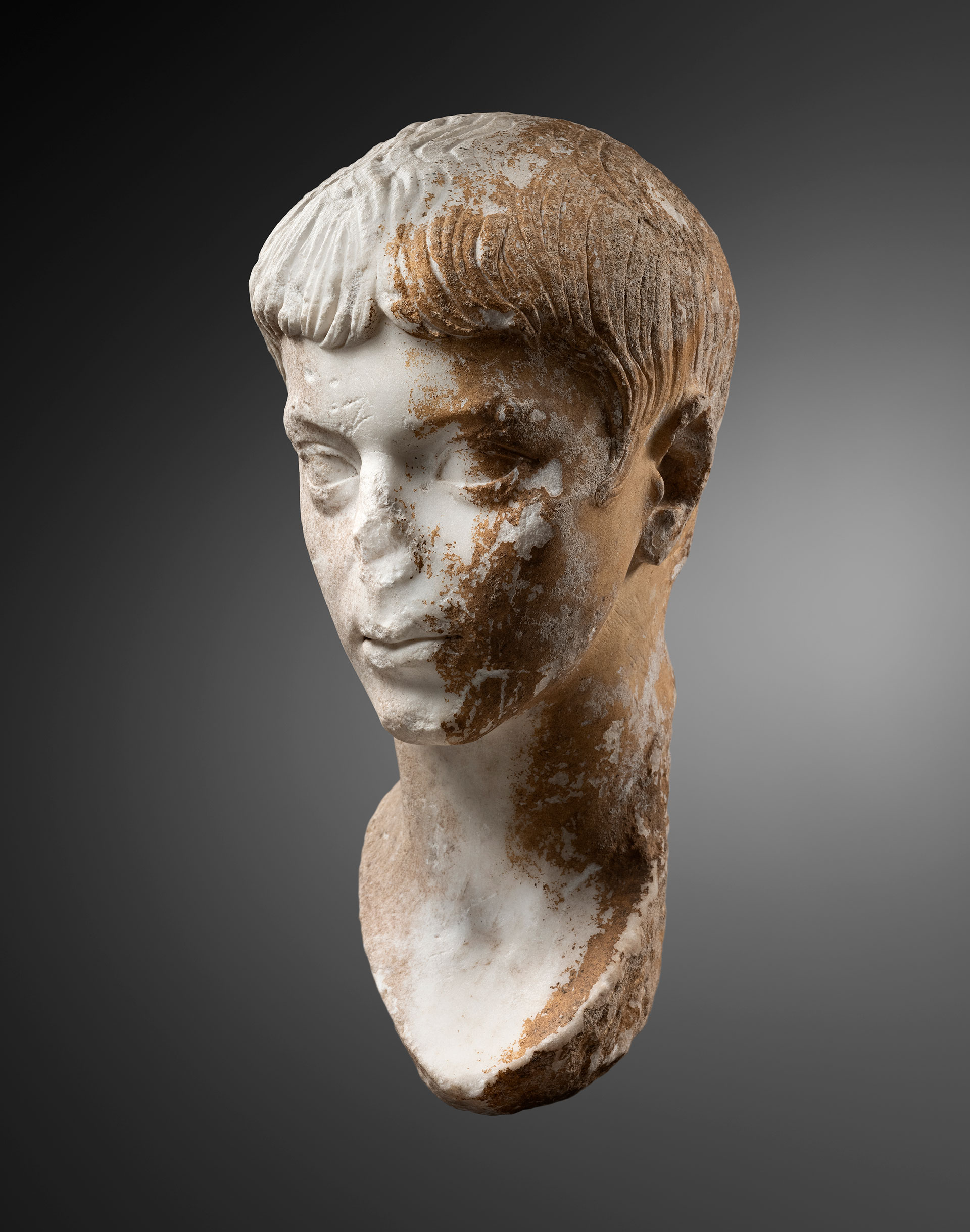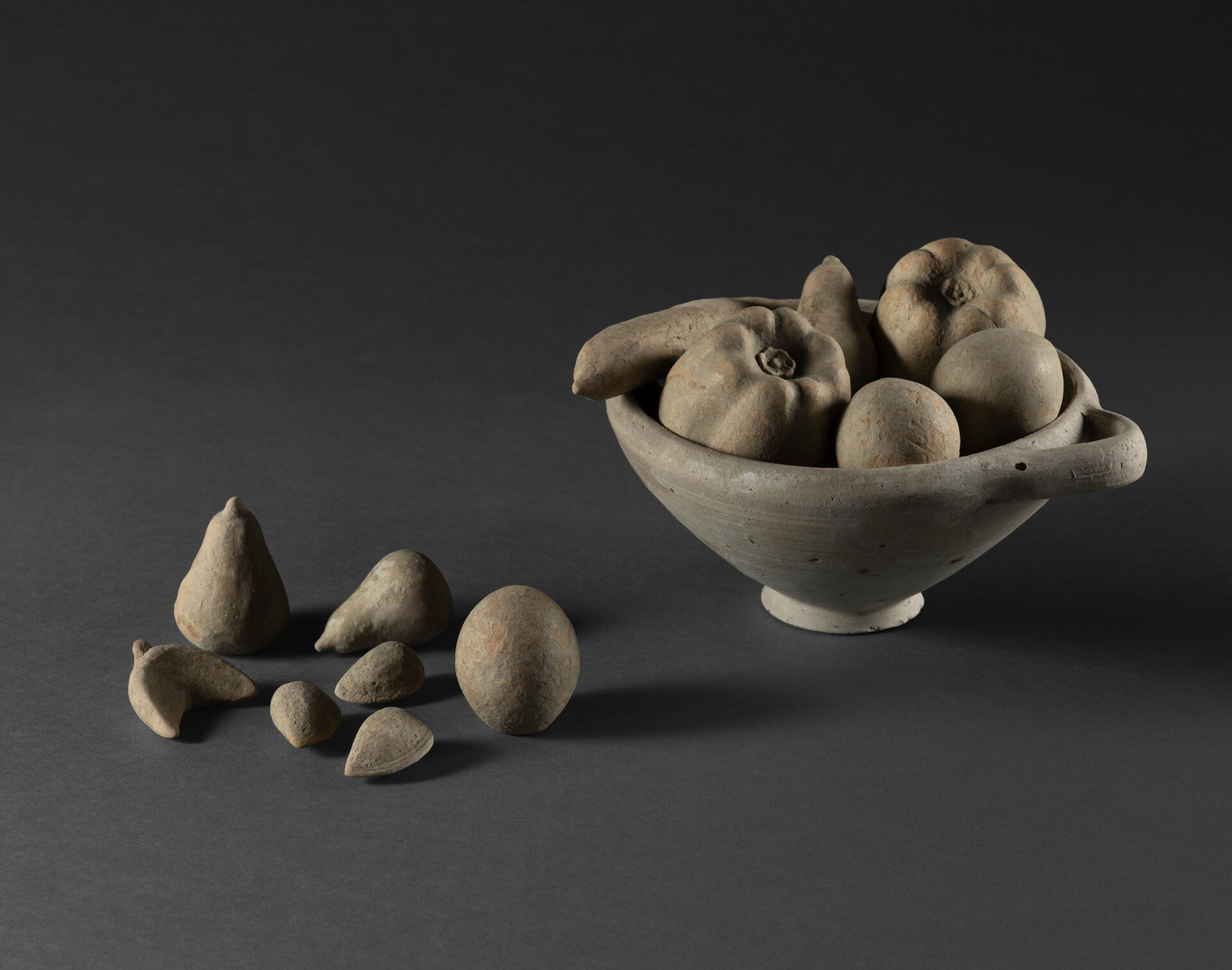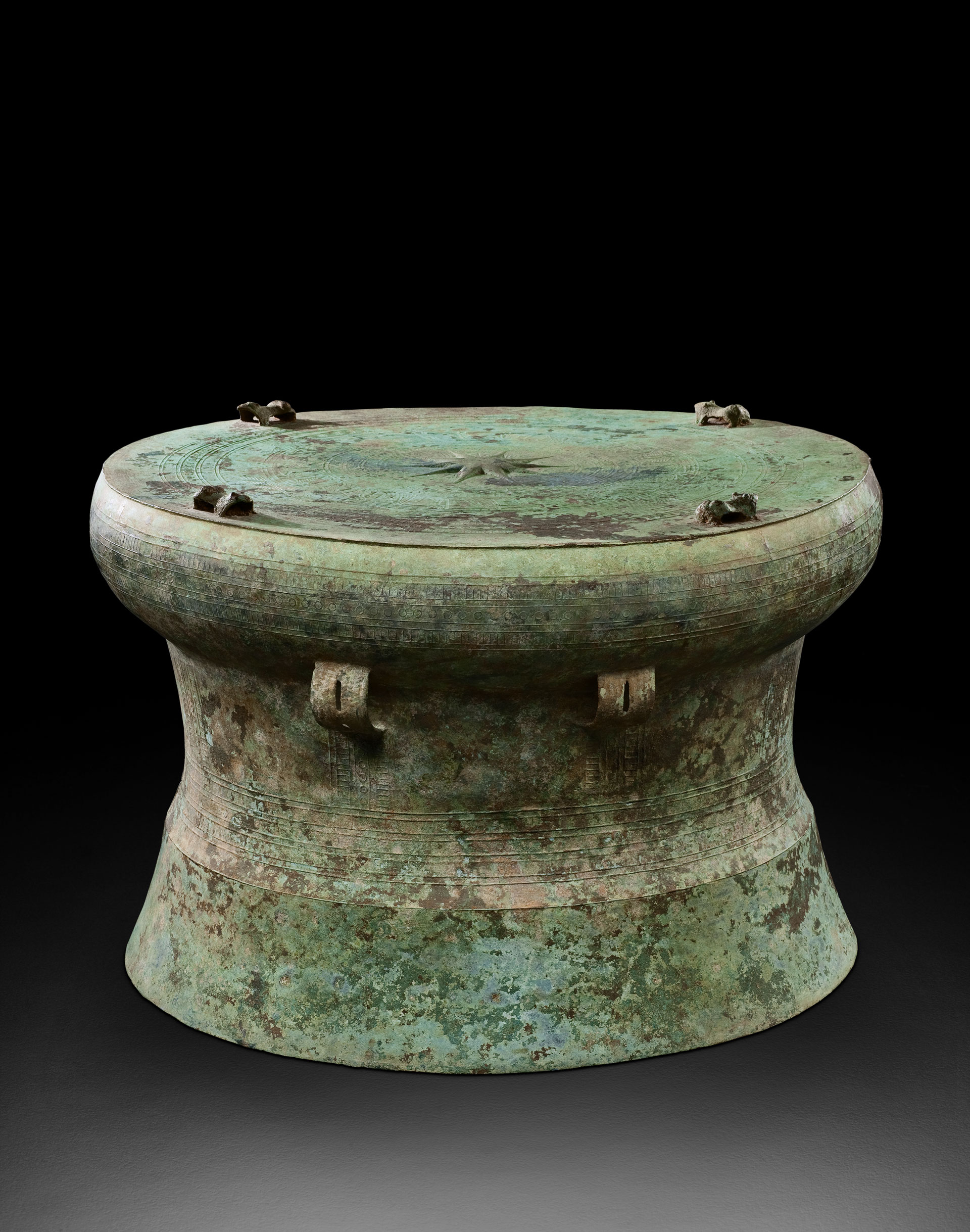Shiva is depicted with four arms: the upper right holds a battle axe, while the upper left delicately balances a prancing deer on his fingers. His lower right hand forms the abhaya mudra, a gesture of reassurance, while the lower left performs the varada mudra, symbolizing benevolence.
His hair is styled in a high chignon of matted locks, a hallmark of Shiva. He wears a tall kiritamakuta (a type of metal crown), and a crescent moon is visible at the front of his chignon, pointing upward.
Draped in a short dhoti that flares outward on both sides, Shiva’s attire is secured at the waist with a belt centered by a kirtimukha buckle—a decorative element featuring a leonine face with bulging eyes and a flat nose. His body is further adorned with intricately beaded jewelry.
The figure stands atop a pedestal, with square perforations at the front and back, designed for securing the sculpture to a litter or cart for transport during temple processions. Shiva Chandrashekhara is primarily venerated in southern India, where he is often depicted alongside his consort, Parvati.
The battle axe and deer allude to a myth in which Shiva was confronted by non-believers. They hurled an axe at him and unleashed a wild stag to attack, but Shiva effortlessly caught both. The deer, ultimately becoming one of his devoted followers, symbolizes his role as Pashupati, Lord of Animals.
Evidence of worship is visible in the wear on the front of the sculpture. In Hindu tradition, deities are venerated through touch and anointment, and this figure was evidently handled frequently during rituals. Bronze icons like this were crafted for both shrine altars within temples and public display during processions. On special occasions, they were also transported between temple buildings for ceremonial purposes.
The Vijayanagar period marks the continuation of an exceptional tradition of bronze work that originated during the Pallava dynasty and was further refined during the Chola dynasty. Masters of form, these artists created images emanating with sensuality and power.
SHIVA
AS CHANDRASHEKHARA
(LORD OF THE CRESCENT MOON)
- South India
- Vijayanagar period
- 15th – 16th century
- Bronze
- Height: 62,7 cm
- Provenance:
Photo credit : Studio Asselberghs – Frédéric Dehaen


